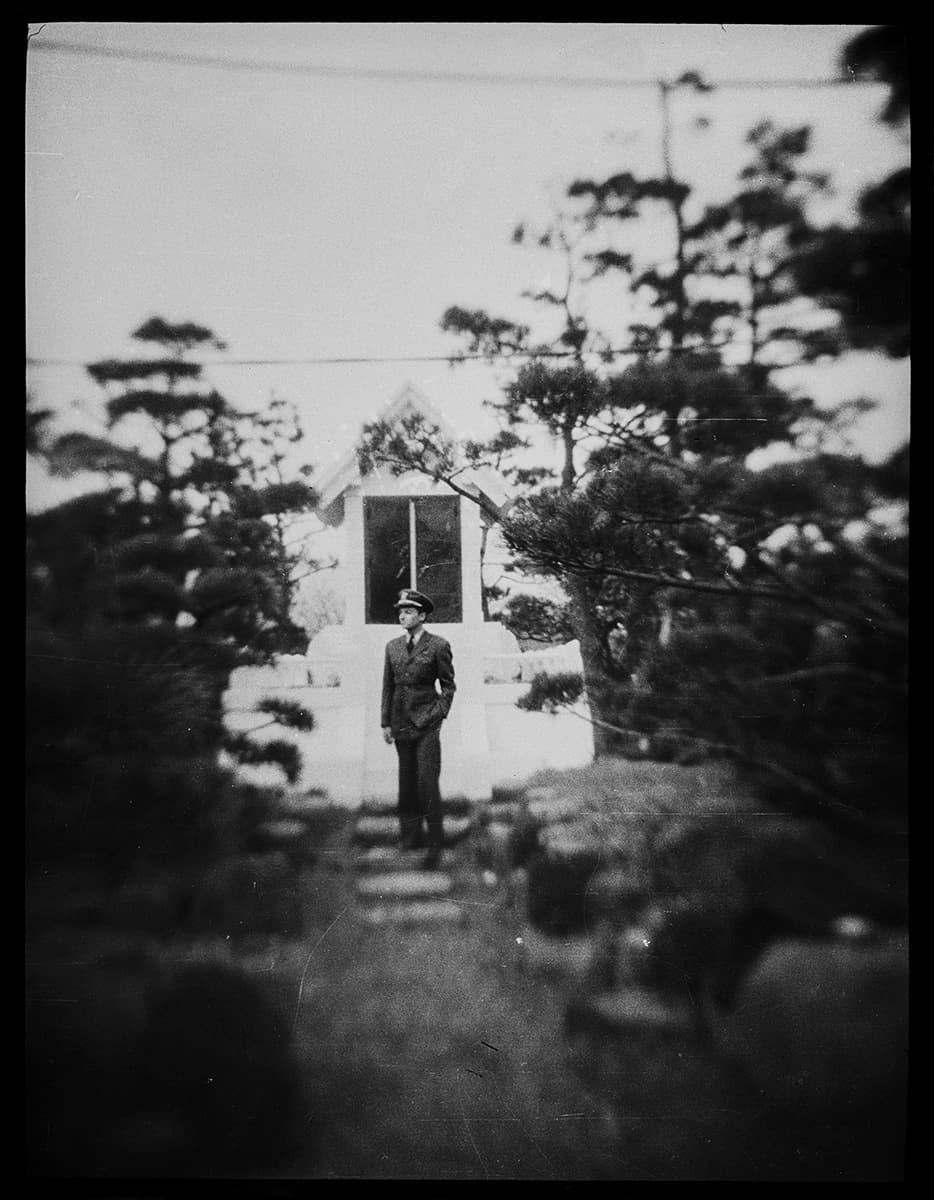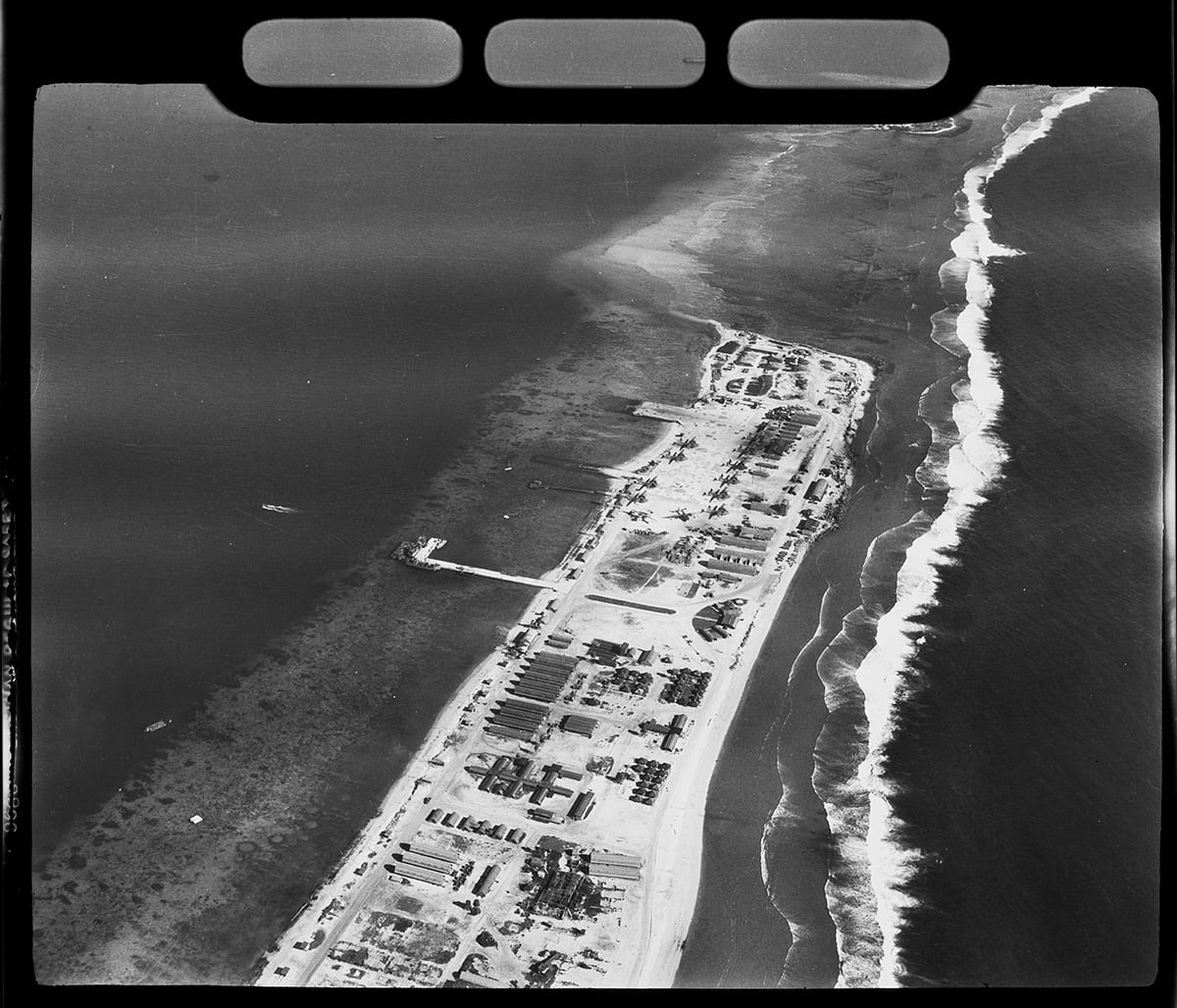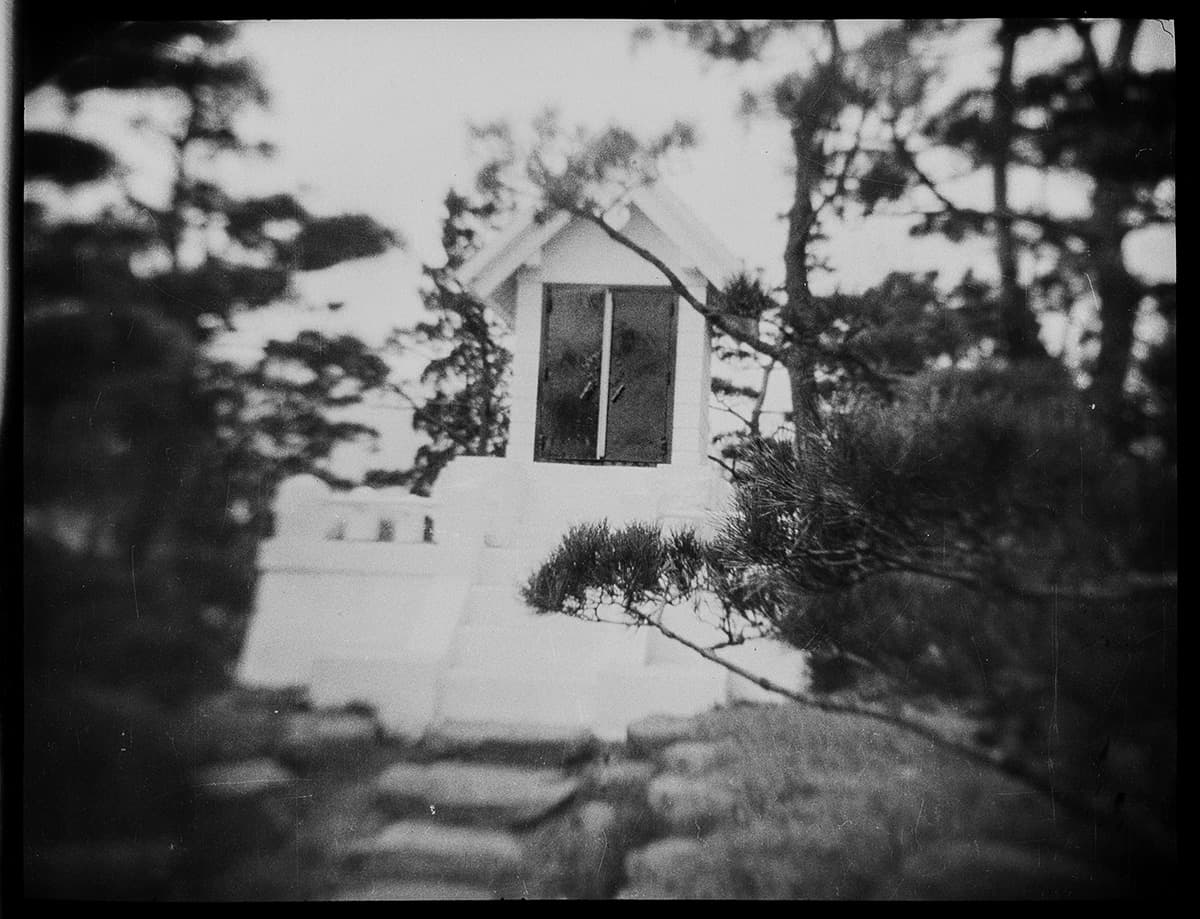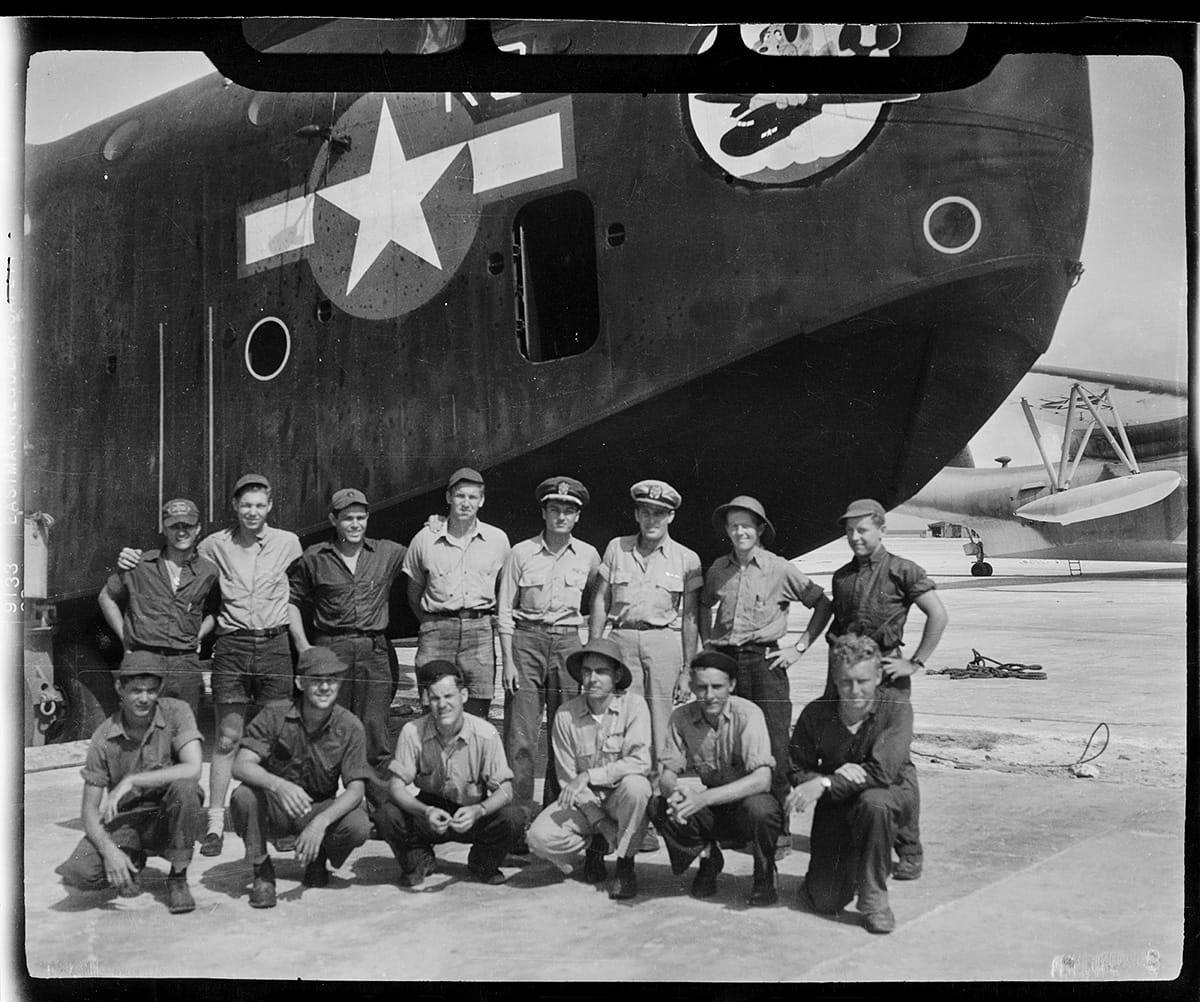
U.S. Navy Rescue Squadron VH-4 in Pacific
U.S. Navy Rescue Squadron VH-4 in Pacific
All the negatives from this archive were stored in a black metal canister from American Kodak Tri-X Pan film with a green branded sticker on which the K-3 VH-4 was handwritten by the photographer. This type of film was used on aerial cameras like the K20 (known as the Fairchild K20), one of the biggest cameras of the World War II period. The K20 used 5.25-inch (approximately 13 cm) wide roll film and takes pictures in a 4×5 frame format. This camera was manufactured by the Fairchild Camera and Instrument Company for military purposes. Approximately 15,000 were produced by the Folmer Graflex Corporation in Rochester, NY between 1941 and 1945. This was the camera used to photograph the nuclear mushroom cloud over Hiroshima from the tail gunner's position of B-29 Enola Gay bomber.
First of all, the Fairchild K20 camera was designed for aerial photography of ground objects for their further examination. But the author of these pictures managed to take many more portraits of his squadron's and airplane's flight and ground personnel. The photographer was a crew member aboard one of the largest American airplanes of World War II, nicknamed "flying boat" - seaplane or amphibious plane Martin PBM (Patrol Bomber, Martin) Mariner.
Crew life on the Mariner was more like life aboard a ship. The 9 crew members spent many hours, days and even months aboard the airplane, and during this time they became almost a family. The duration of a flight could be as long as 14 hours, depending on fuel load and weather. And when the airplane was on the water, half of the crew had to stay inside in case of an emergency. Therefore, the airplane was equipped with the necessary facilities, making it possible to live on board. The airplane had: a sleeping compartment with 4 bunks, a room for rest for the personnel who were not on duty, a galley with a small stove for cooking, where one person from the crew could cook food and serve it to other crew members, a pantry and of course a lavatory. It can be said that it was a flying barracks.
The primary mission of the aircraft was anti-submarine patrols as well as rescue missions. Since the aircraft had to operate far from bases, the U.S. Navy built and converted destroyers into support vessels and tugs for this type of aircraft. They also built more serious ships equipped with special shipboard cranes capable of lifting such a huge airplane out of the water. This was important because some aircraft needed repairs, including not only battle damage. Despite the new powerful engines, such a huge airplane still lacked power. It needed a large space for takeoff and found itself in difficult situations on the rough water. In some cases, this resulted mostly in hull damage, but there were cases when the airplane nose-dived forward, which was simply catastrophic. Often, as the plane took off, sailors on ships would line up along the side of the plane to see if the giant would even take off.
According to reports, in many cases, the aircraft's fuel poured into the cabin, which during accidents often led to aircraft fires and even explosions. Therefore, the Mariner was nicknamed "Flying Gas Tank". There are even records of fuel explosions during the flight. One of the reasons for such cases could have been the galley stove on which food was cooked. Such cases were rare, but they cast a dark shadow on the airplane's reputation.
In the spring of 1945, Mariner squadrons operated on combat missions during the Battle of Okinawa. Based on Kerama Retto Island, southwest of Okinawa, they conducted anti-ship raids against small enemy convoys. But most significantly, they did the very important job of rescuing aviators of B-29 bombers that participated in the bombing of Japan, as well as downed aircraft during combat missions between Formosa Island (now Taiwan) and Japan. And despite its weaknesses the Mariner was quite difficult to shoot down. Often the planes returned to the airbase riddled with bullets or without nose and tail hull parts.
During this time, the photographer served aboard a Martin Mariner in Rescue Squadron 4 (VH-4). The photographer was probably flying an airplane with flight number K3 and emblem of a St. Bernard dog flying on the Mariner. VH-4 Squadron was one of six special rescue squadrons of the U.S. Navy during World War II. VH-4 Squadron made 42 rescues of downed airmen and 9 rescues of Filipino civilians. They most often operated in cooperation with VH-3 and remained in the shadows of their merits. The VH-4 rescue squadron was established in September 1944 and disbanded in November 1946.
VH-4 squadron aircraft traveled to the Philippines, Okinawa, Tokyo and Nagasaki areas. The archive of this unknown photographer preserved one unique and previously unknown photo of the city center of Nagasaki, destroyed by the American atomic bomb Fat Man, equivalent to 21 thousand tons of TNT, dropped by the Americans on August 9, 1945.
Despite its military service and operations in the Atlantic and Pacific Oceans, participation in nuclear weapons tests and expeditions to the North Pole, the Mariner amphibious aircraft, as well as most of its crew, were forgotten by history.

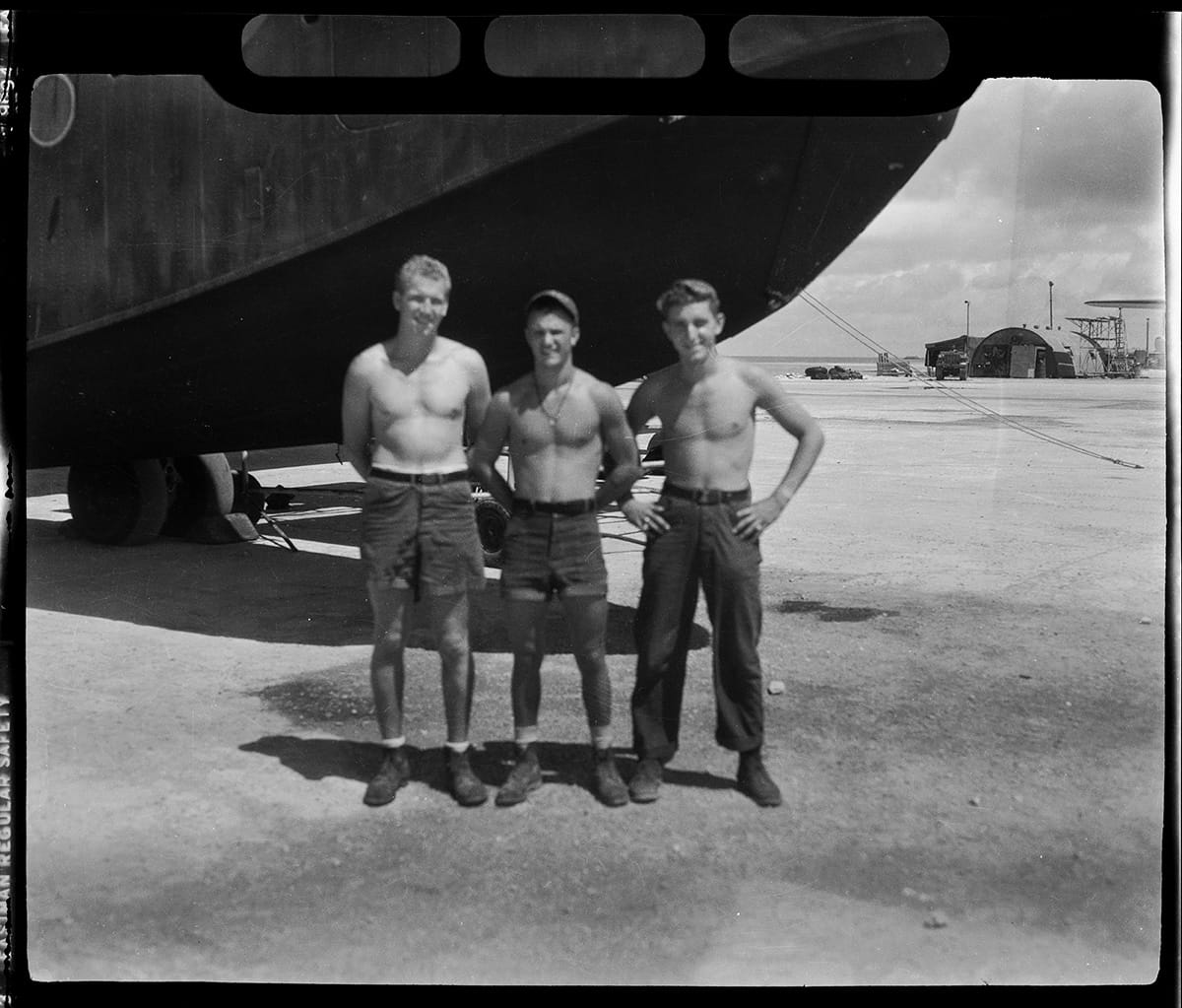
Ground crew of VH-4 Rescue Squadron next to Martin PBM Mariner aircraft numbered K-3 at the base airfield. Pacific Ocean. 1945
Ground crew of VH-4 Rescue Squadron next to Martin PBM Mariner aircraft numbered K-3 at the base airfield. Pacific Ocean. 1945
Ground crew of VH-4 Rescue Squadron next to Martin PBM Mariner aircraft numbered K-3 at the base airfield. Pacific Ocean. 1945
Ground crew of VH-4 Rescue Squadron next to Martin PBM Mariner aircraft numbered K-3 at the base airfield. Pacific Ocean. 1945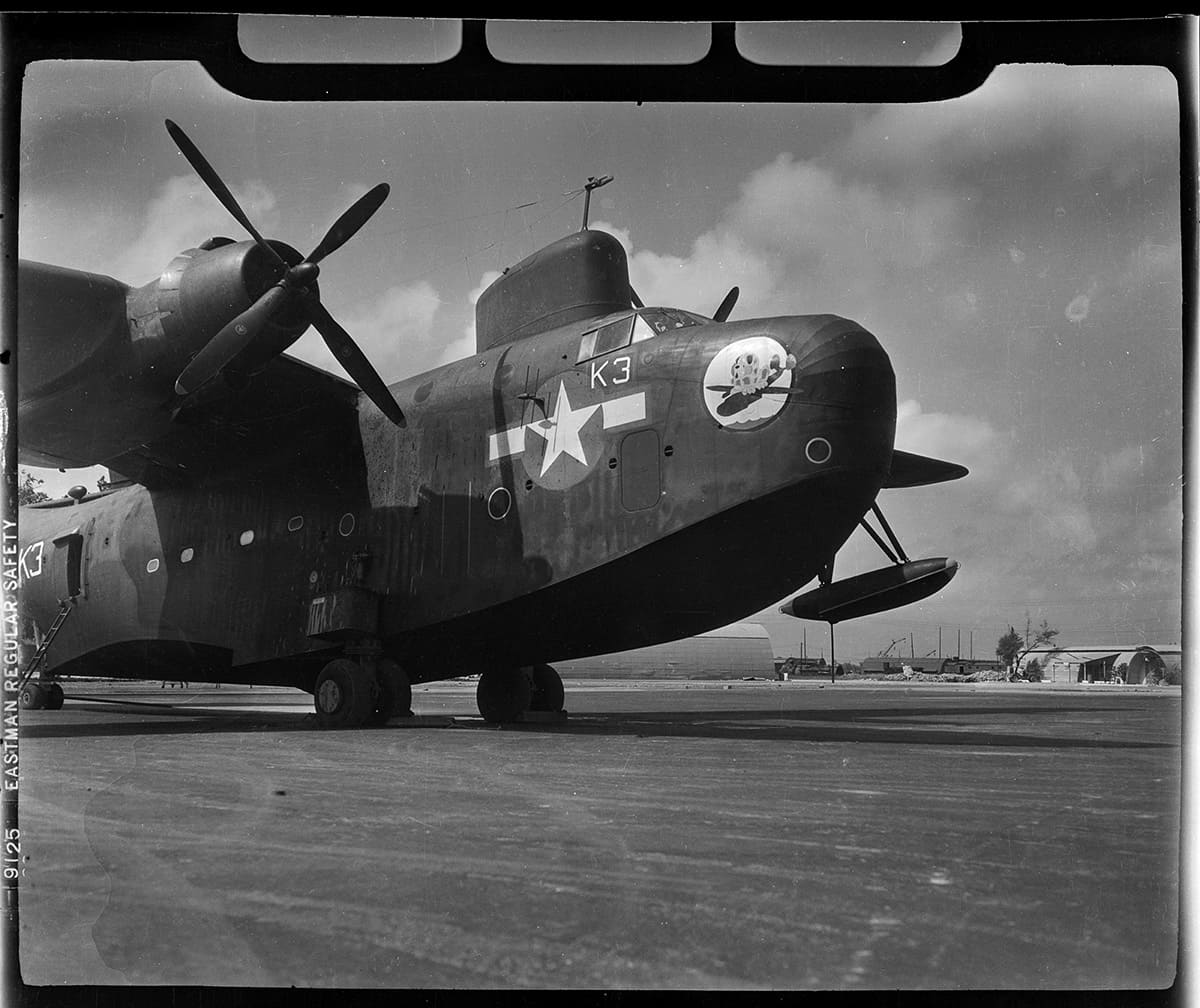
An American Martin PBM Mariner aircraft with the number K-3 of the VH-4 rescue squadron at the base airfield. A St. Bernard dog flying the Mariner is depicted on the bot. Pacific Ocean. 1945
An American Martin PBM Mariner aircraft with the number K-3 of the VH-4 rescue squadron at the base airfield. A St. Bernard dog flying the Mariner is depicted on the bot. Pacific Ocean. 1945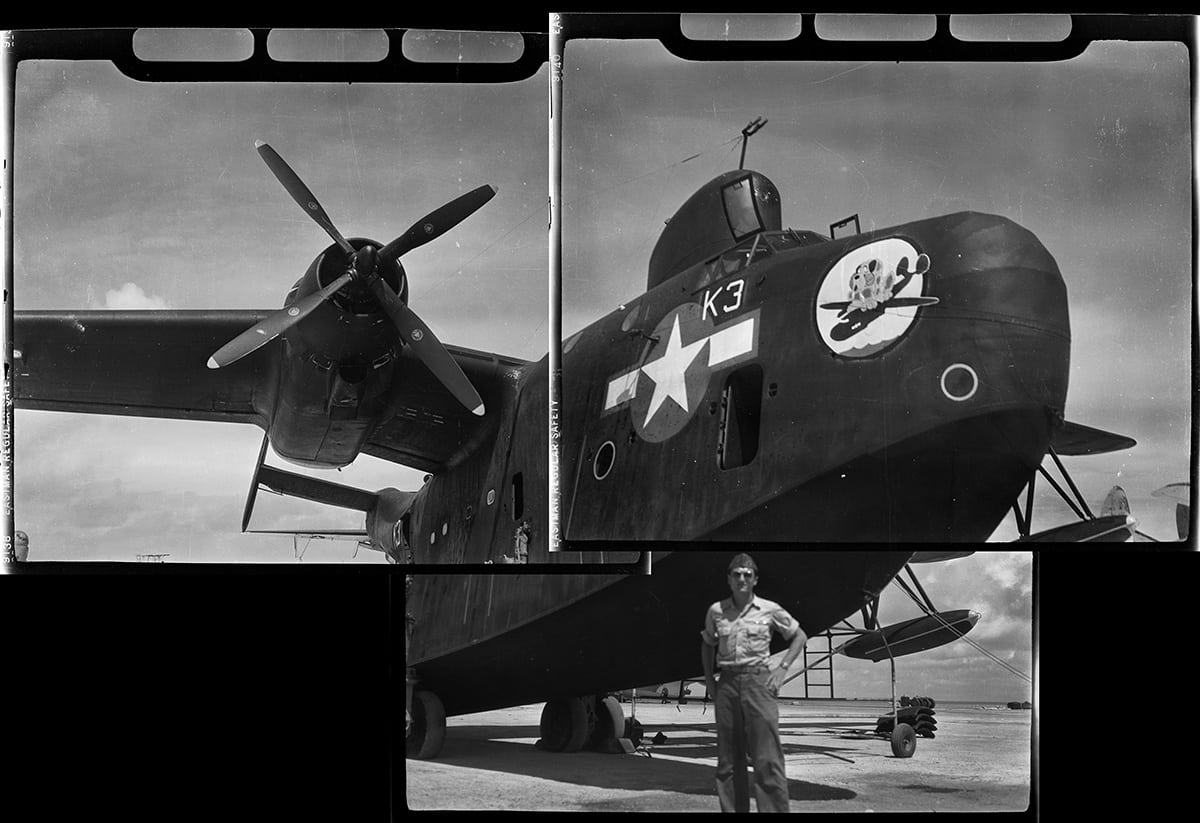
American Martin PBM Mariner aircraft with number K-3 of rescue squadron VH-4 at the base airfield. Pacific Ocean. 1945
American Martin PBM Mariner aircraft with number K-3 of rescue squadron VH-4 at the base airfield. Pacific Ocean. 1945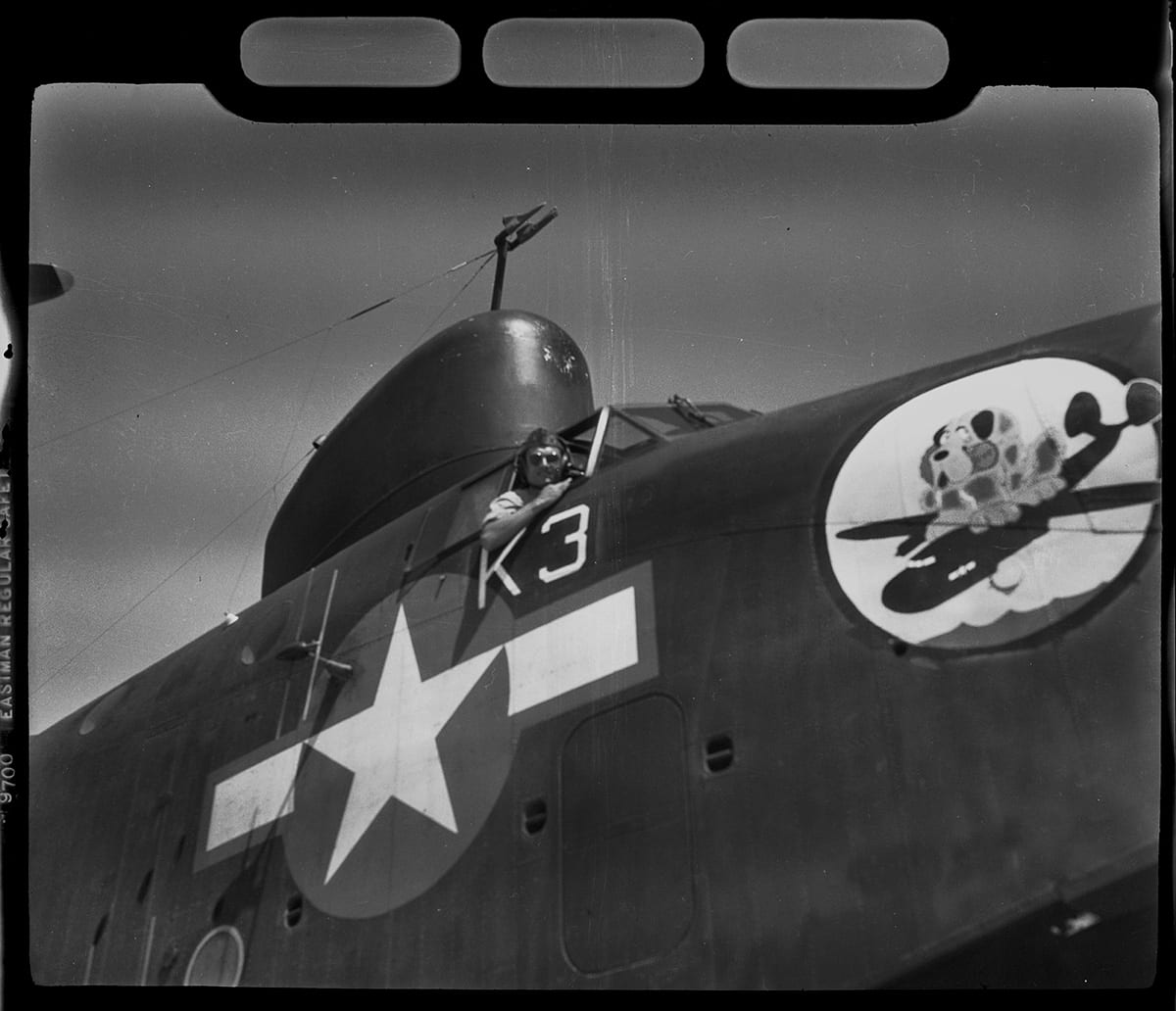
A VH-4 rescue squadron pilot looks out of the cockpit of a Martin PBM Mariner aircraft, numbered K-3, at the base airfield. Pacific Ocean. 1945
A VH-4 rescue squadron pilot looks out of the cockpit of a Martin PBM Mariner aircraft, numbered K-3, at the base airfield. Pacific Ocean. 1945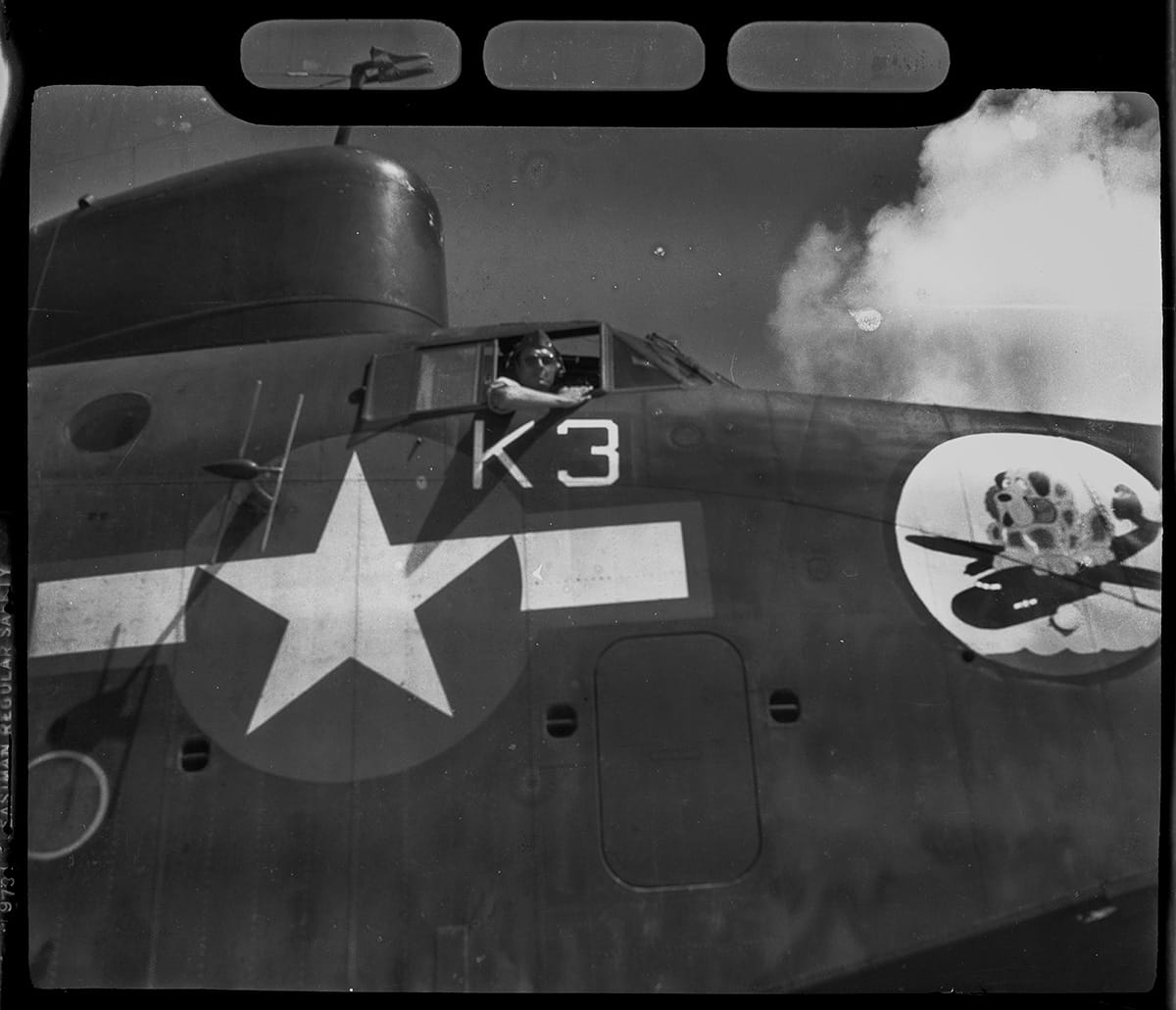
A VH-4 rescue squadron pilot looks out of the cockpit of a Martin PBM Mariner aircraft, numbered K-3, at the base airfield. Pacific Ocean. 1945
A VH-4 rescue squadron pilot looks out of the cockpit of a Martin PBM Mariner aircraft, numbered K-3, at the base airfield. Pacific Ocean. 1945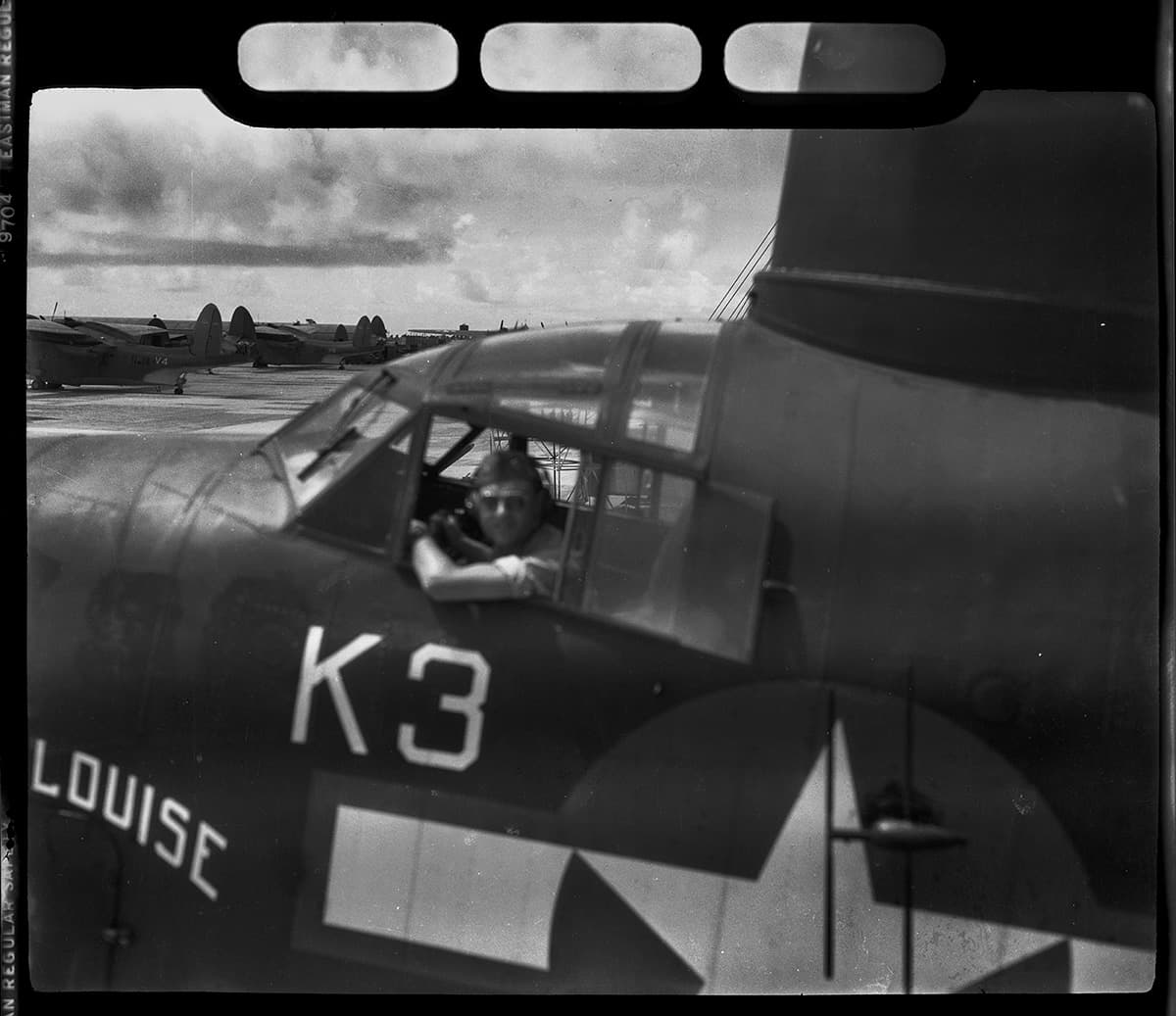
A VH-4 rescue squadron pilot looks out of the cockpit of a Martin PBM Mariner aircraft, numbered K-3, at the base airfield. Pacific Ocean. 1945
A VH-4 rescue squadron pilot looks out of the cockpit of a Martin PBM Mariner aircraft, numbered K-3, at the base airfield. Pacific Ocean. 1945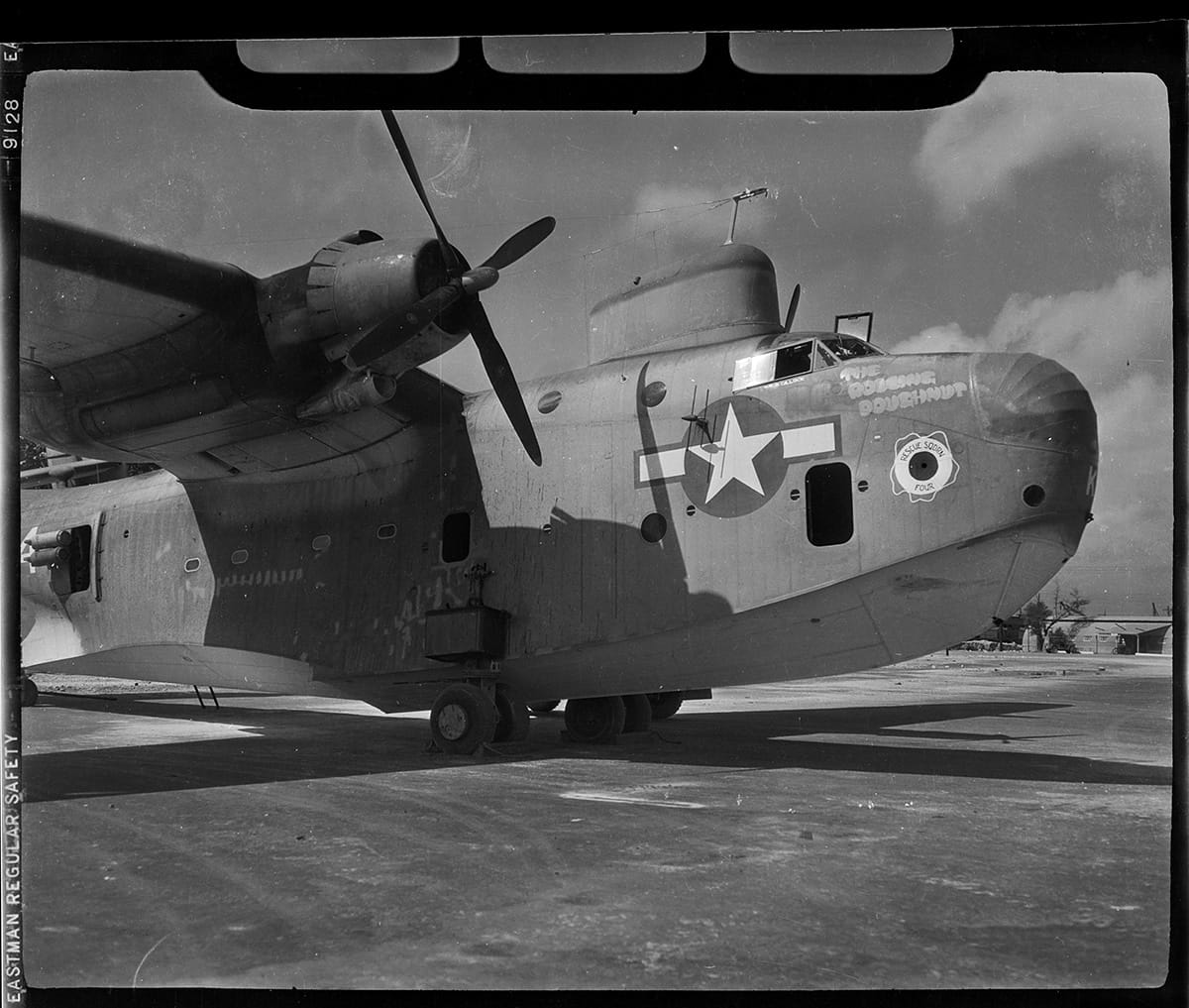
A VH-4 rescue squadron pilot looks out of the cockpit of a Martin PBM Mariner aircraft, numbered K-3, at the base airfield. Pacific Ocean. 1945
A VH-4 rescue squadron pilot looks out of the cockpit of a Martin PBM Mariner aircraft, numbered K-3, at the base airfield. Pacific Ocean. 1945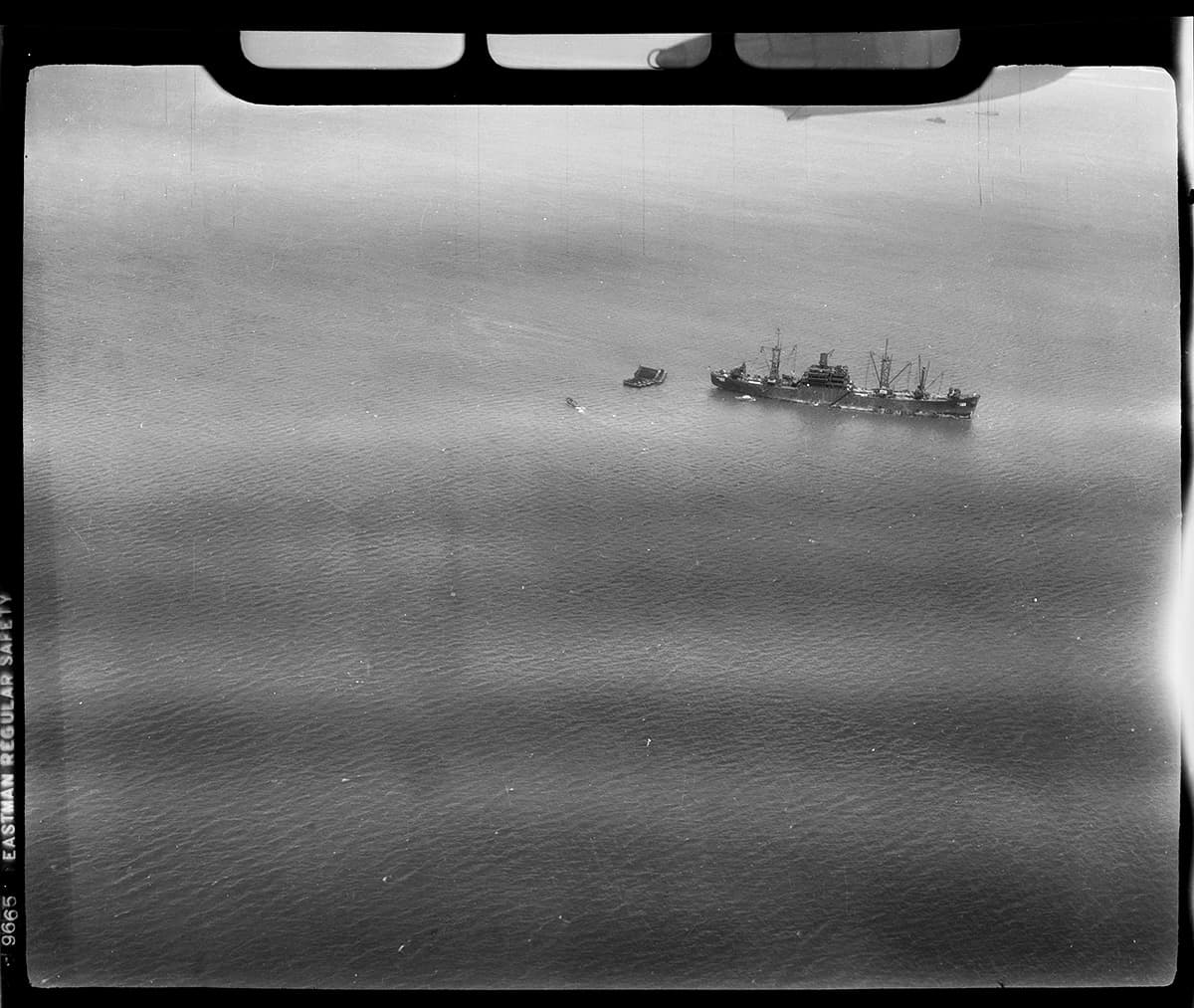
Tolland-class attack cargo ship USS Ottawa (AKA-101), Commander Jackson Mizell. Pacific Ocean. After February 1945
Tolland-class attack cargo ship USS Ottawa (AKA-101), Commander Jackson Mizell. Pacific Ocean. After February 1945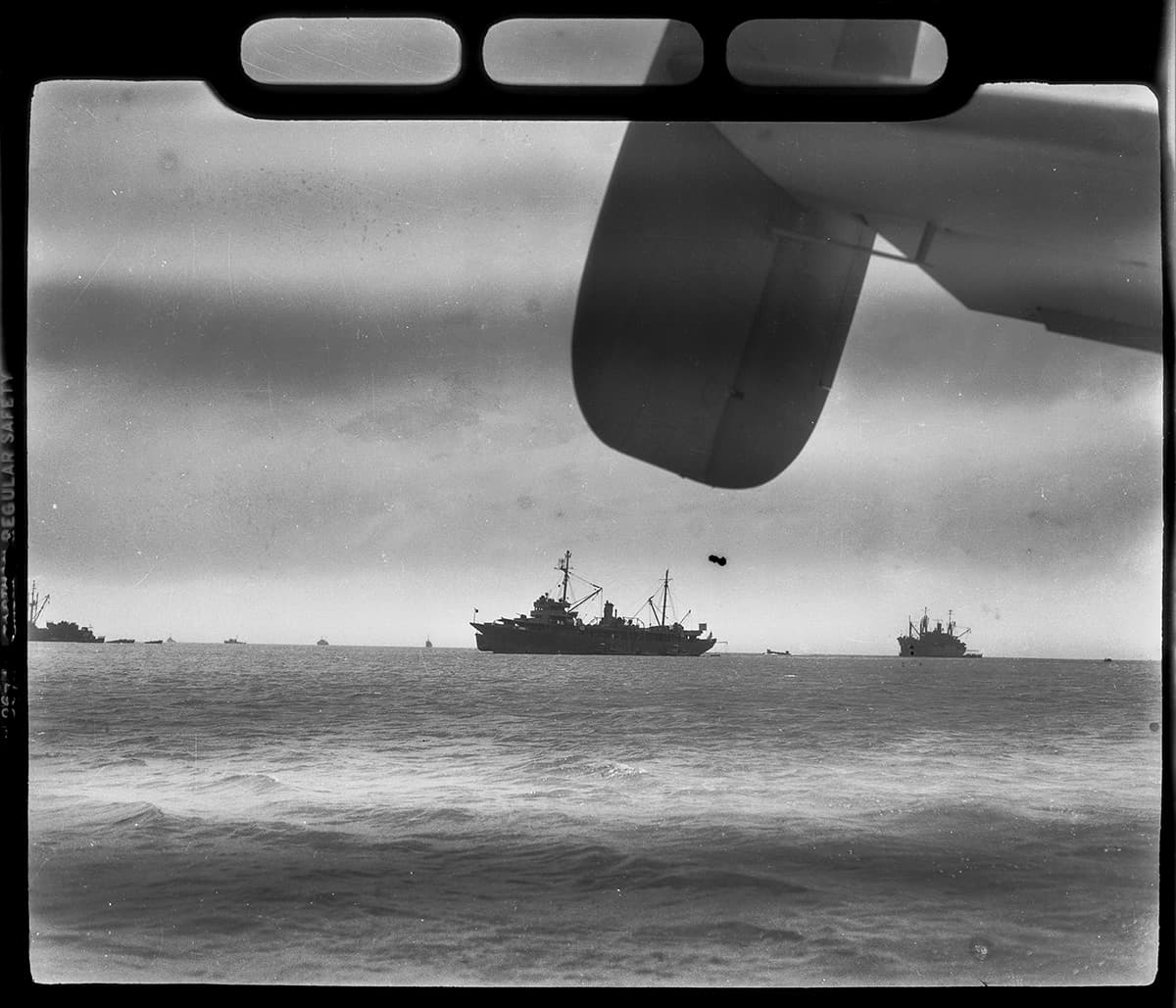
Attack cargo ships and support ships for amphibious aircraft. The Tolland-class attack cargo ship USS Ottawa (AKA-101) is seen behind. Pacific Ocean. After February 1945
Attack cargo ships and support ships for amphibious aircraft. The Tolland-class attack cargo ship USS Ottawa (AKA-101) is seen behind. Pacific Ocean. After February 1945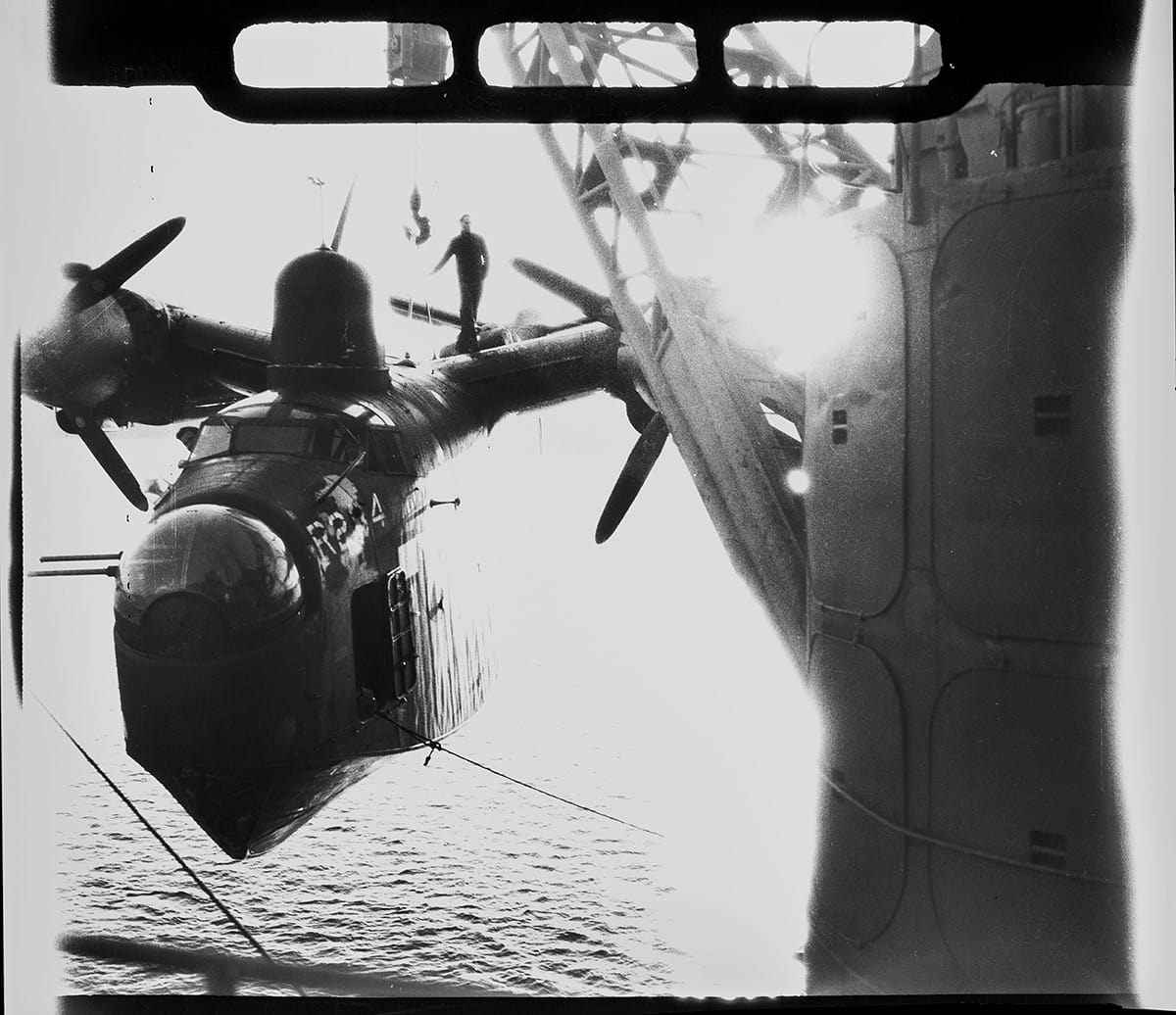
A Martin PBM Mariner aircraft, tail number R284, armed with two 12.7mm nose-mounted machine guns, lifted by a ship's crane onto a floating base. Pacific Ocean. 1945
A Martin PBM Mariner aircraft, tail number R284, armed with two 12.7mm nose-mounted machine guns, lifted by a ship's crane onto a floating base. Pacific Ocean. 1945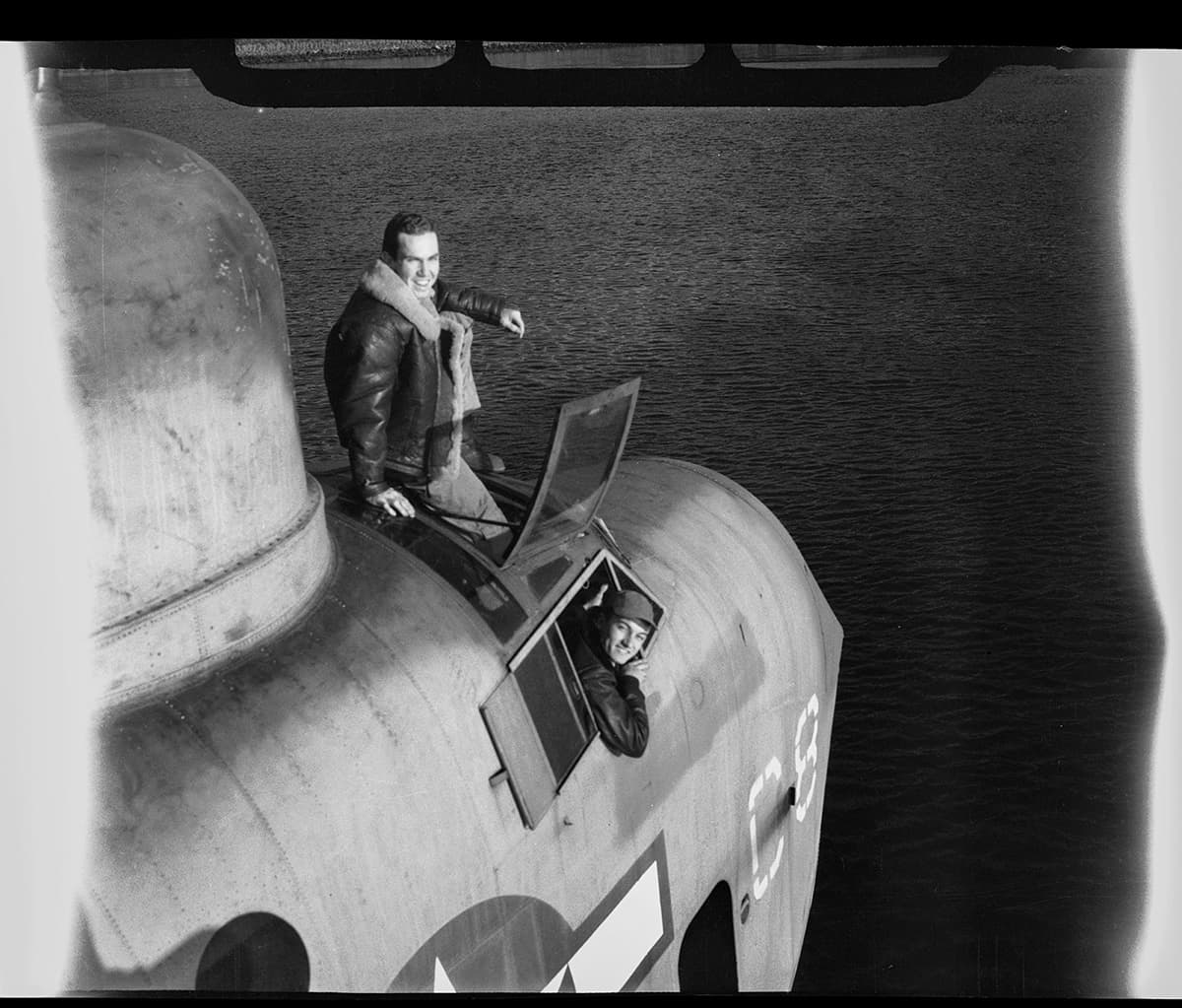
Portrait of aviators on a Martin PBM Mariner aircraft with the number C8. Pacific Ocean. 1945
Portrait of aviators on a Martin PBM Mariner aircraft with the number C8. Pacific Ocean. 1945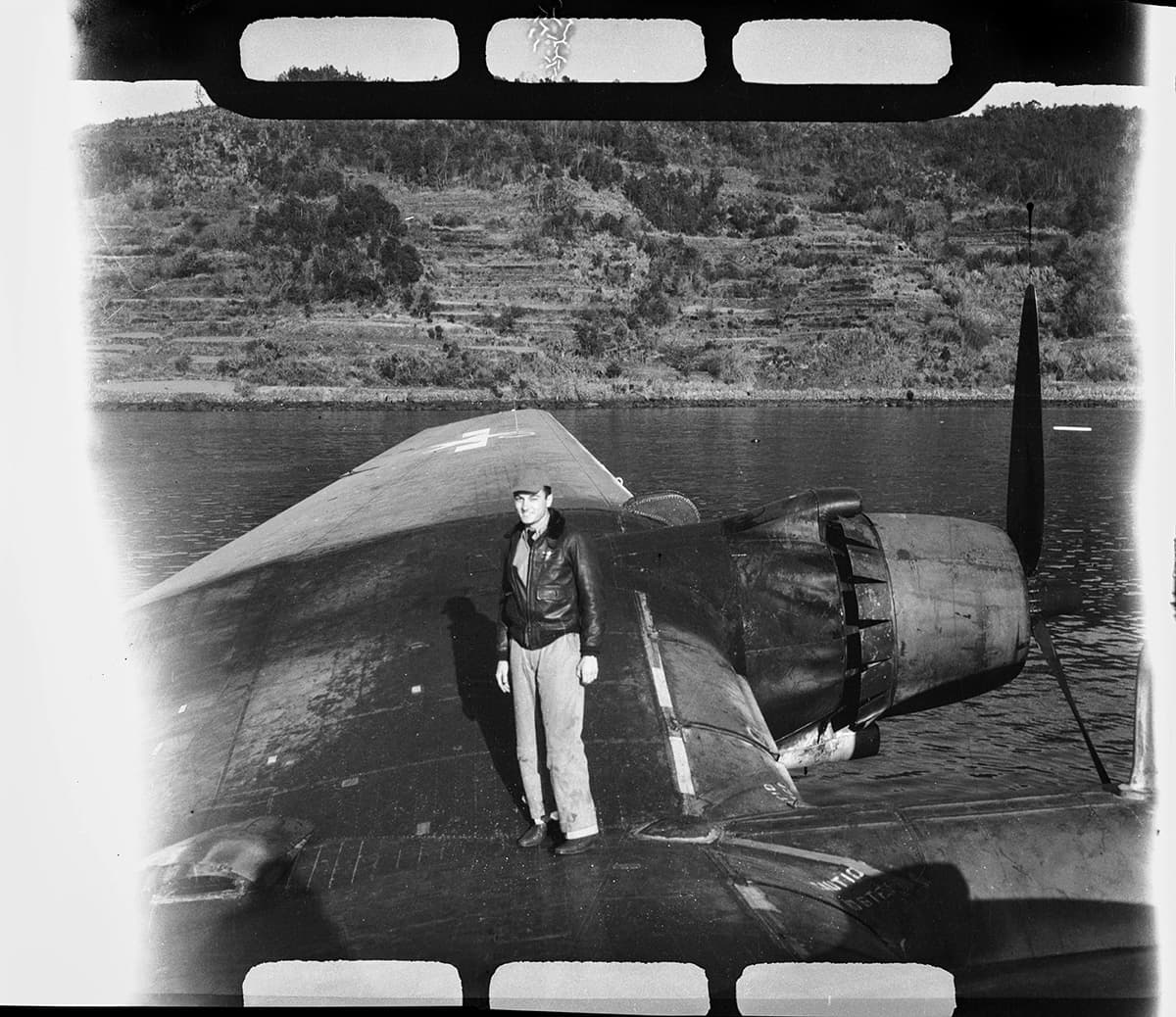
Portrait of an aviator on the wing of a Martin PBM Mariner aircraft with the number K-3. An island in the Pacific Ocean. 1945
Portrait of an aviator on the wing of a Martin PBM Mariner aircraft with the number K-3. An island in the Pacific Ocean. 1945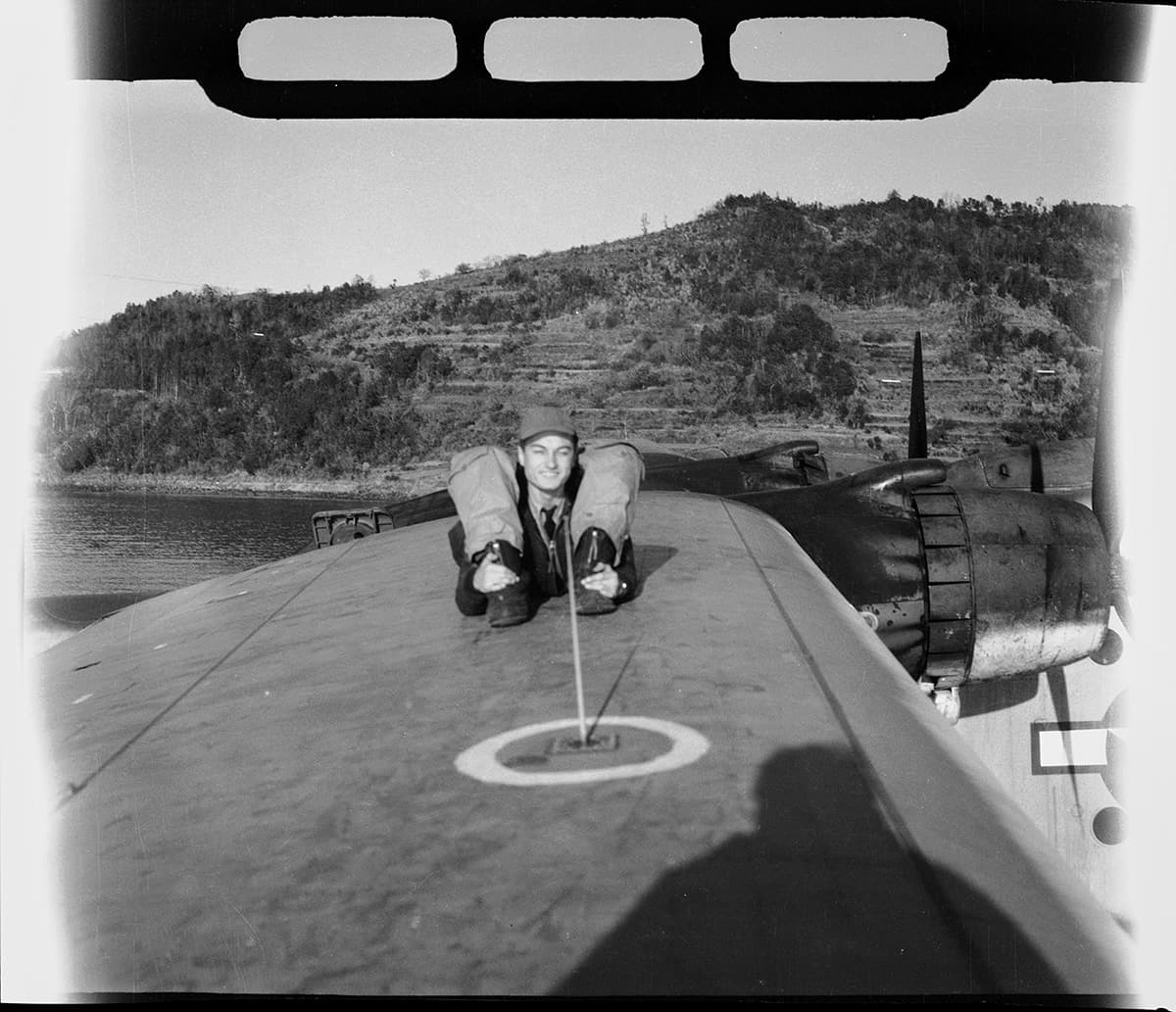
Portrait of an aviator on the wing of a Martin PBM Mariner aircraft with the number K-3. An island in the Pacific Ocean. 1945
Portrait of an aviator on the wing of a Martin PBM Mariner aircraft with the number K-3. An island in the Pacific Ocean. 1945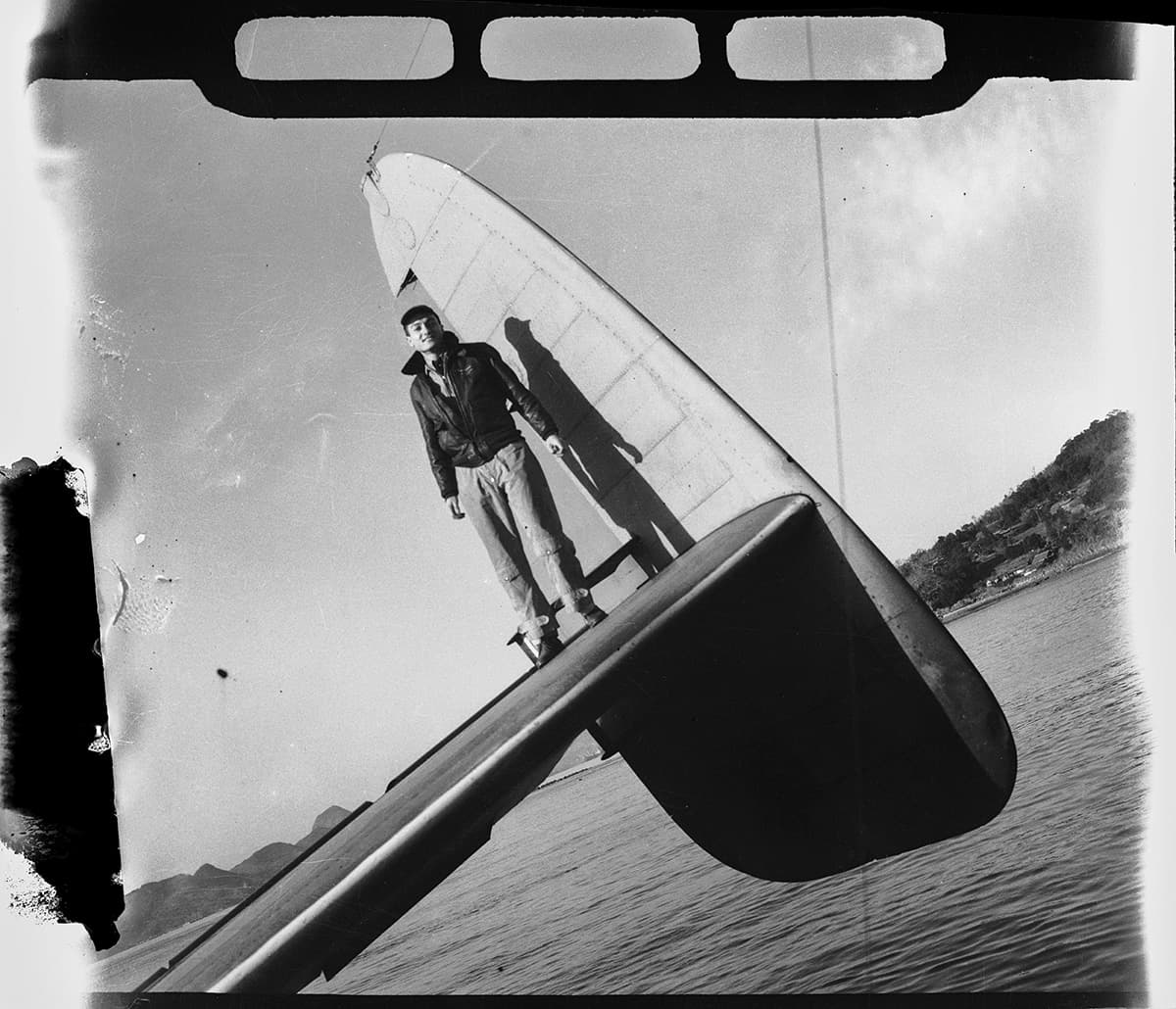
Portrait of an aviator on the wing of a Martin PBM Mariner aircraft with the number K-3. An island in the Pacific Ocean. 1945
Portrait of an aviator on the wing of a Martin PBM Mariner aircraft with the number K-3. An island in the Pacific Ocean. 1945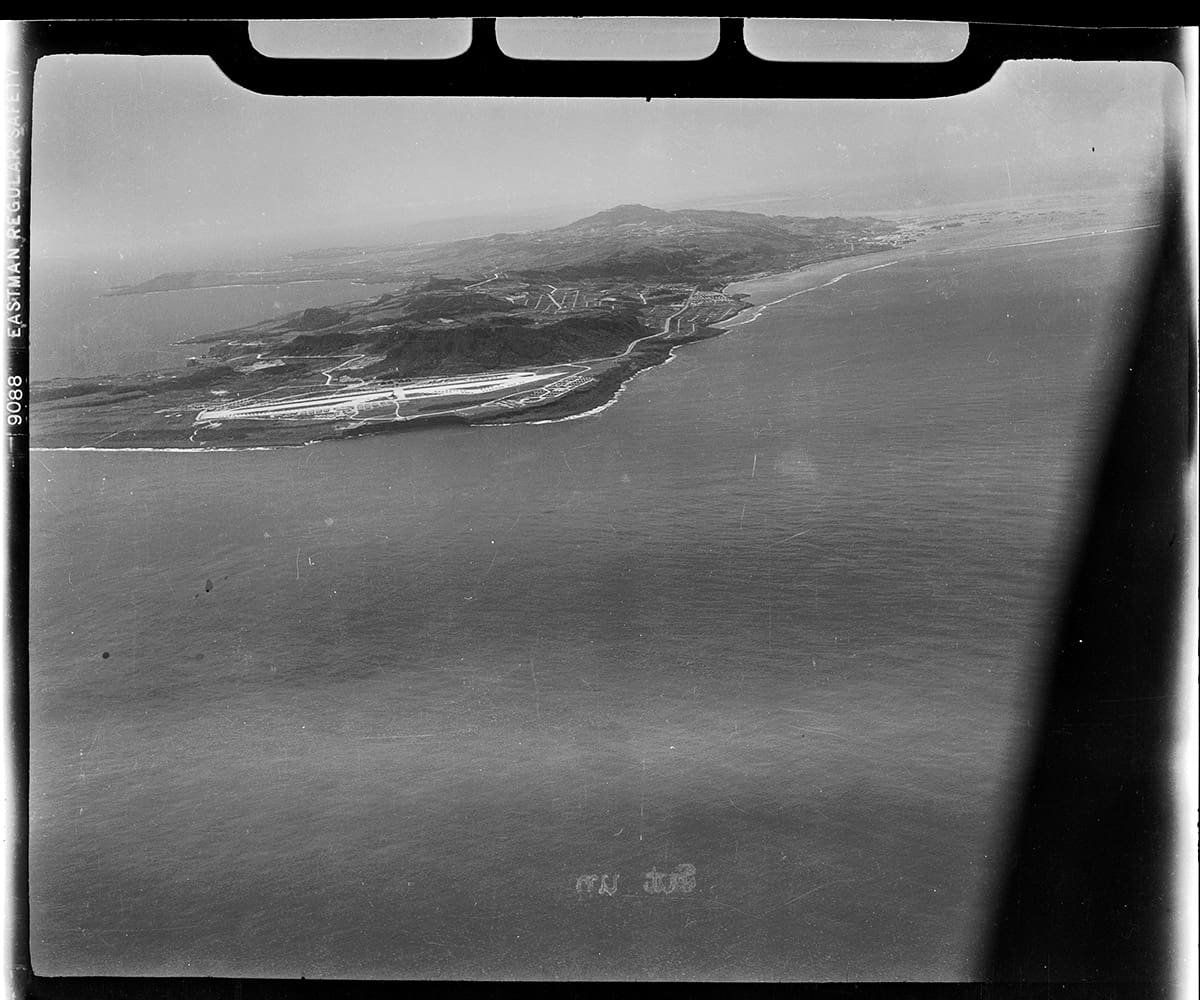
The island of Saipan, captured by American troops. It was on this island in 1944 that thousands of Japanese committed suicide to avoid being captured by the Americans. Saipan, Japan. 1945
The island of Saipan, captured by American troops. It was on this island in 1944 that thousands of Japanese committed suicide to avoid being captured by the Americans. Saipan, Japan. 1945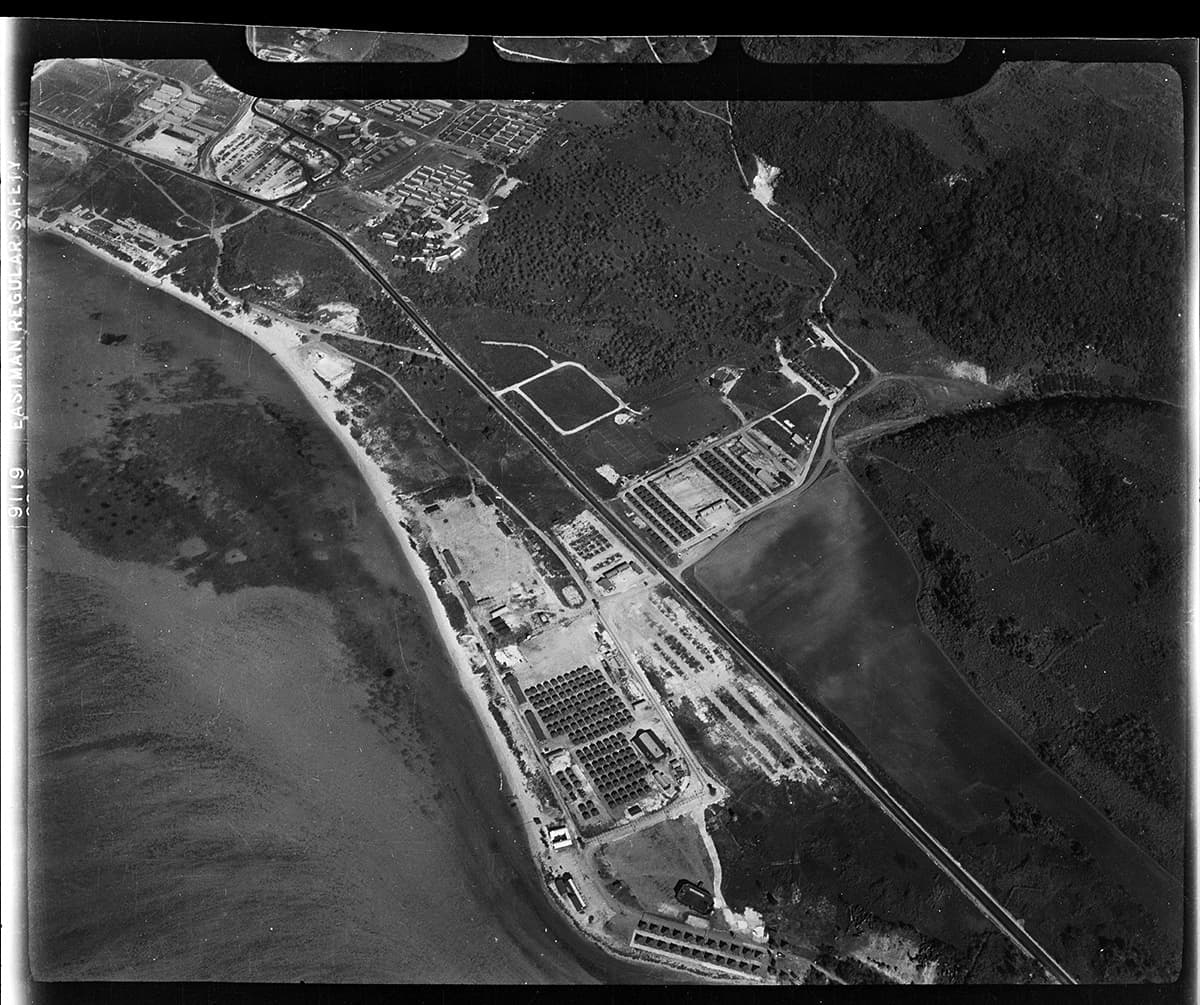
The island of Saipan, captured by American troops. It was on this island in 1944 that thousands of Japanese committed suicide to avoid being captured by the Americans. Saipan, Japan. 1945
The island of Saipan, captured by American troops. It was on this island in 1944 that thousands of Japanese committed suicide to avoid being captured by the Americans. Saipan, Japan. 1945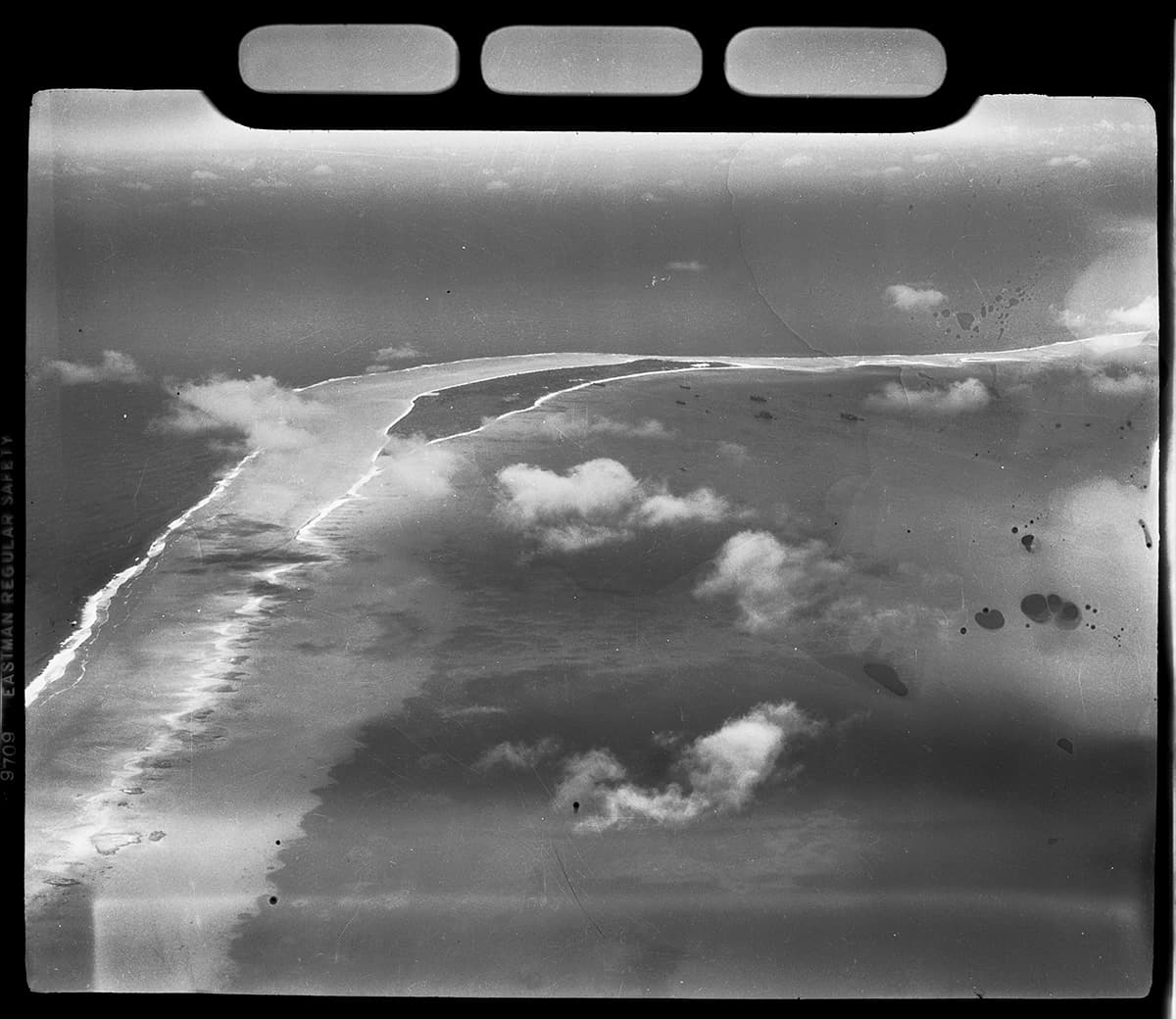
Supposedly Bikini Atoll in the Pacific Ocean. After World War II, the atoll's 167 inhabitants were forcibly relocated in 1946, and the islands and lagoon were the site of 23 nuclear tests by the United States until 1958. Marshall Islands. Pacific Ocean. 1945
Supposedly Bikini Atoll in the Pacific Ocean. After World War II, the atoll's 167 inhabitants were forcibly relocated in 1946, and the islands and lagoon were the site of 23 nuclear tests by the United States until 1958. Marshall Islands. Pacific Ocean. 1945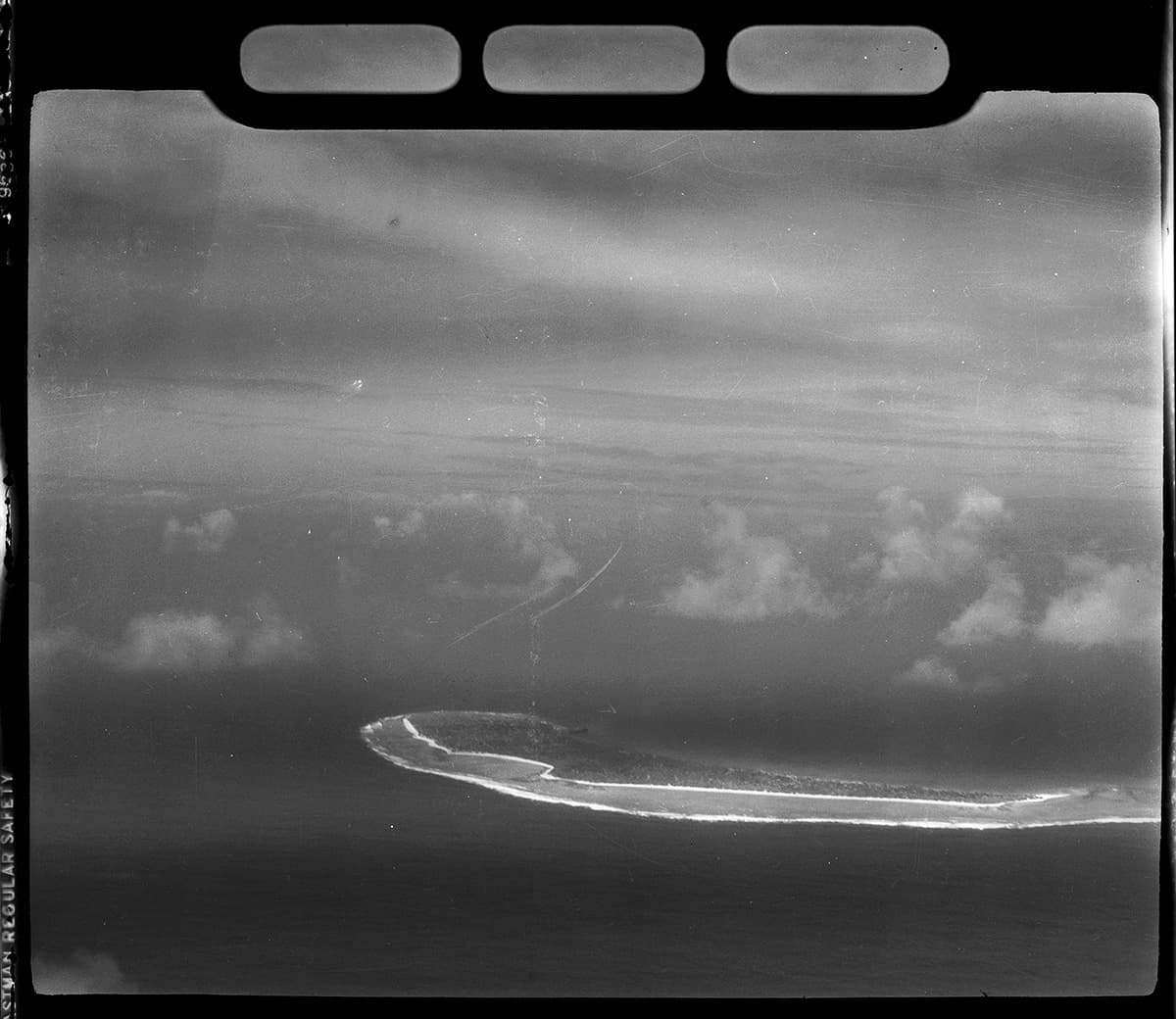
Supposedly Bikini Atoll in the Pacific Ocean. After World War II, the atoll's 167 inhabitants were forcibly relocated in 1946, and the islands and lagoon were the site of 23 nuclear tests by the United States until 1958. Marshall Islands. Pacific Ocean. 1945
Supposedly Bikini Atoll in the Pacific Ocean. After World War II, the atoll's 167 inhabitants were forcibly relocated in 1946, and the islands and lagoon were the site of 23 nuclear tests by the United States until 1958. Marshall Islands. Pacific Ocean. 1945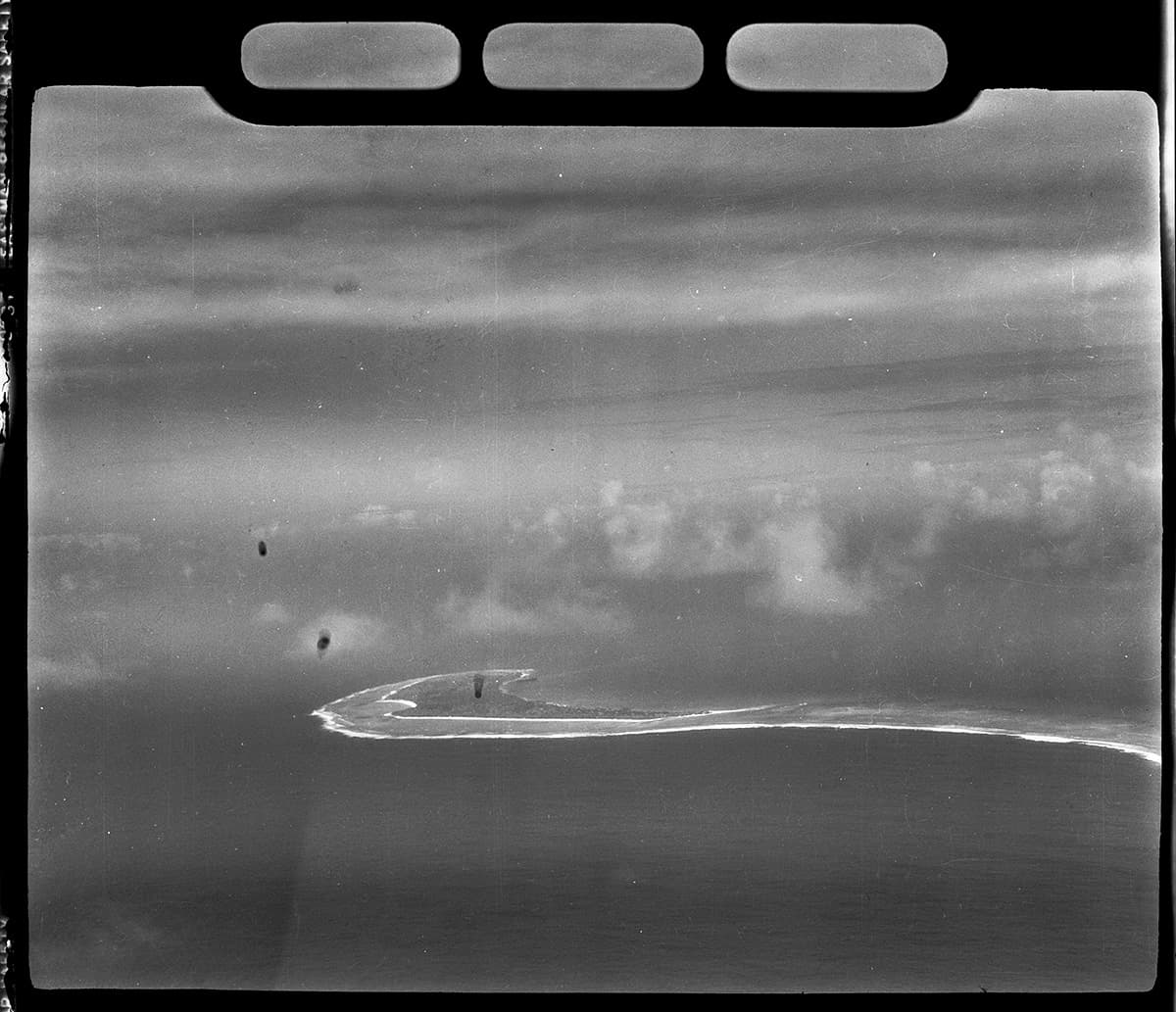
Supposedly Bikini Atoll in the Pacific Ocean. After World War II, the atoll's 167 inhabitants were forcibly relocated in 1946, and the islands and lagoon were the site of 23 nuclear tests by the United States until 1958. Marshall Islands. Pacific Ocean. 1945
Supposedly Bikini Atoll in the Pacific Ocean. After World War II, the atoll's 167 inhabitants were forcibly relocated in 1946, and the islands and lagoon were the site of 23 nuclear tests by the United States until 1958. Marshall Islands. Pacific Ocean. 1945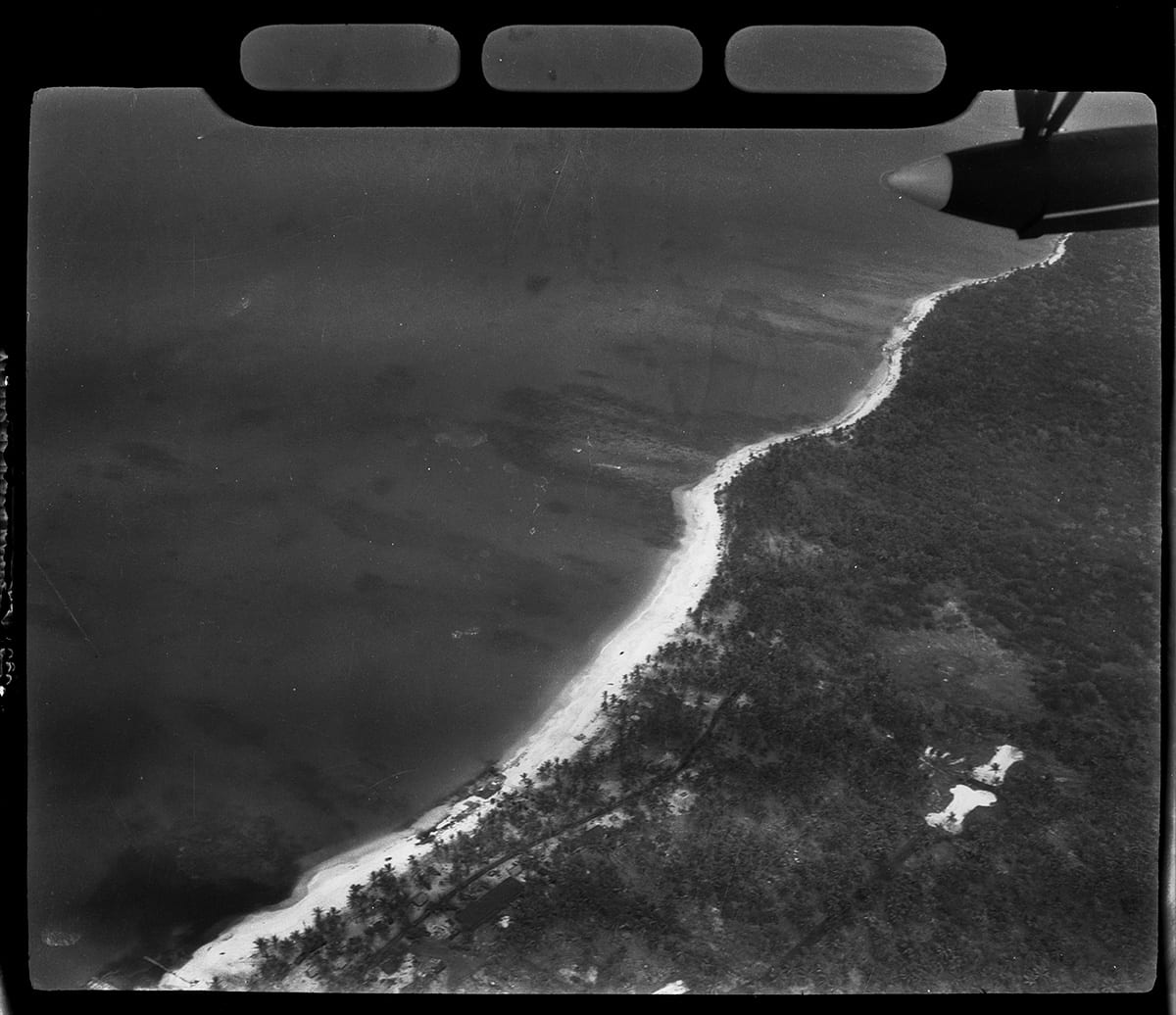
One of the atolls in the Pacific Ocean. Marshall Islands. Pacific Ocean. 1945
One of the atolls in the Pacific Ocean. Marshall Islands. Pacific Ocean. 1945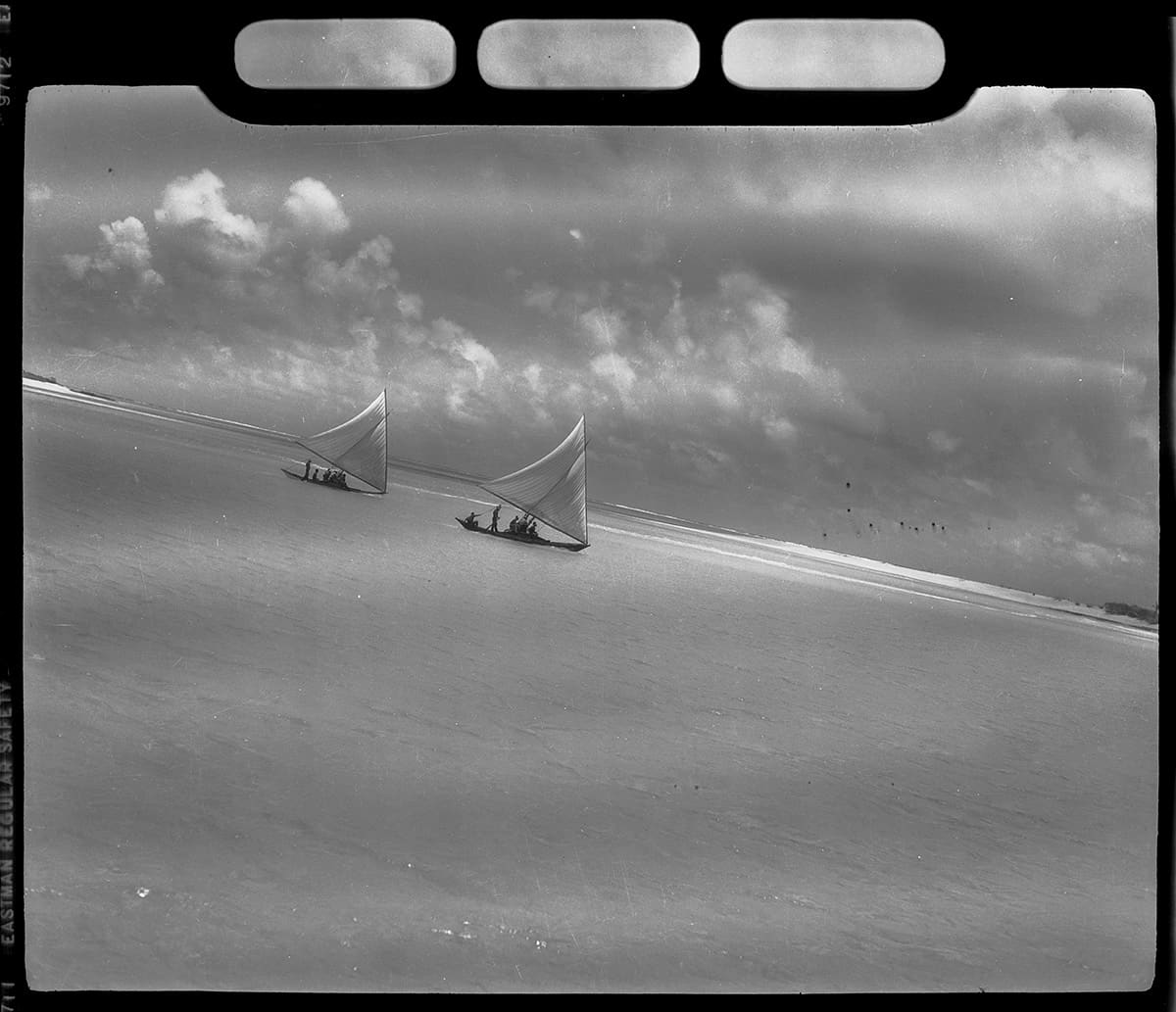
Two proas on an island in the Pacific Ocean. The proa is a specific type of multi-hulled sailing vessel used by Polynesian and Samoan islanders in the Pacific Ocean. Proa are characteristic of the Malay Archipelago and the islands of the South Pacific. Pacific Ocean. 1945
Two proas on an island in the Pacific Ocean. The proa is a specific type of multi-hulled sailing vessel used by Polynesian and Samoan islanders in the Pacific Ocean. Proa are characteristic of the Malay Archipelago and the islands of the South Pacific. Pacific Ocean. 1945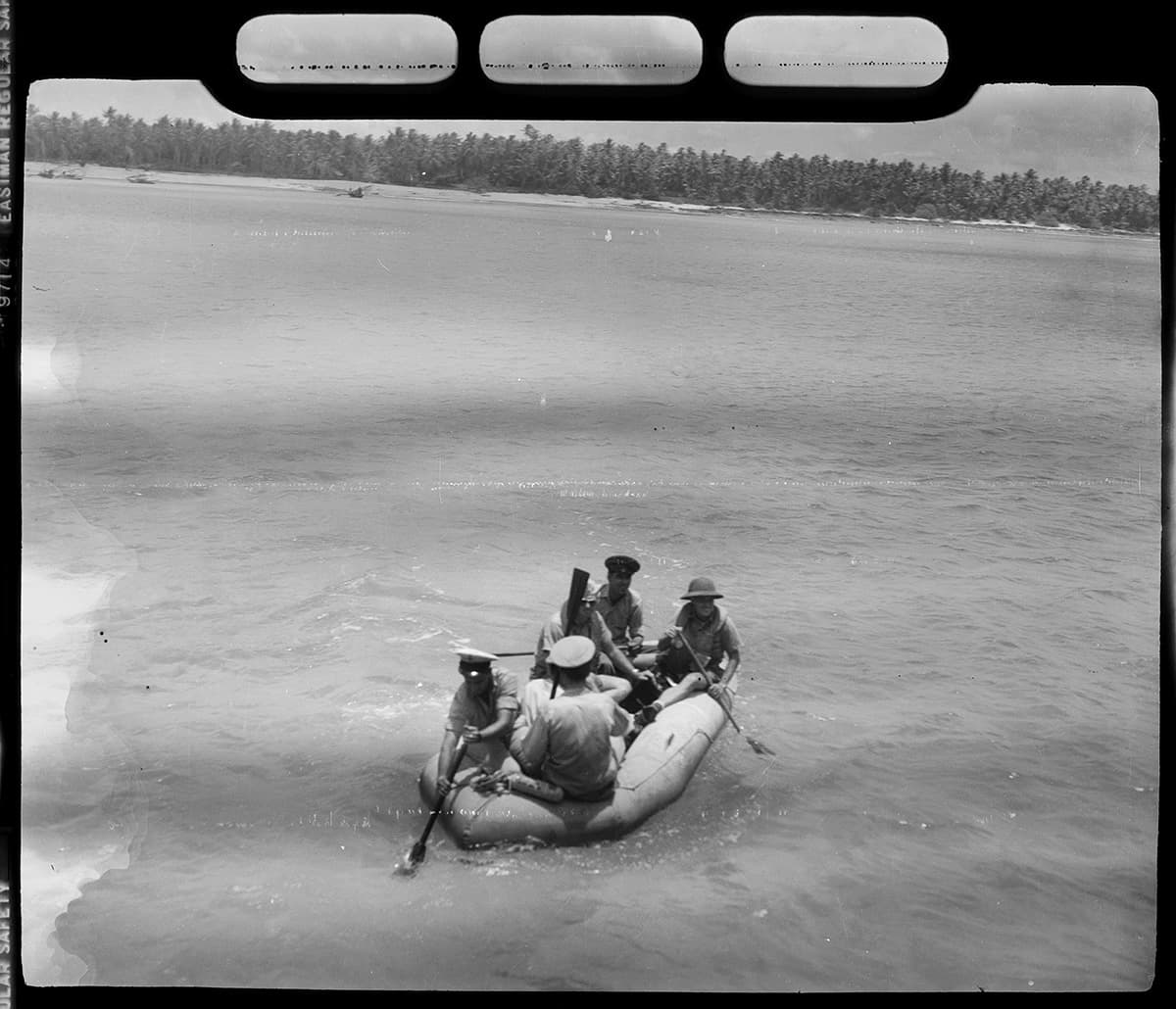
The crew of the Mariner floats an inflatable boat to the aircraft from one of the islands. Pacific Ocean. 1945
The crew of the Mariner floats an inflatable boat to the aircraft from one of the islands. Pacific Ocean. 1945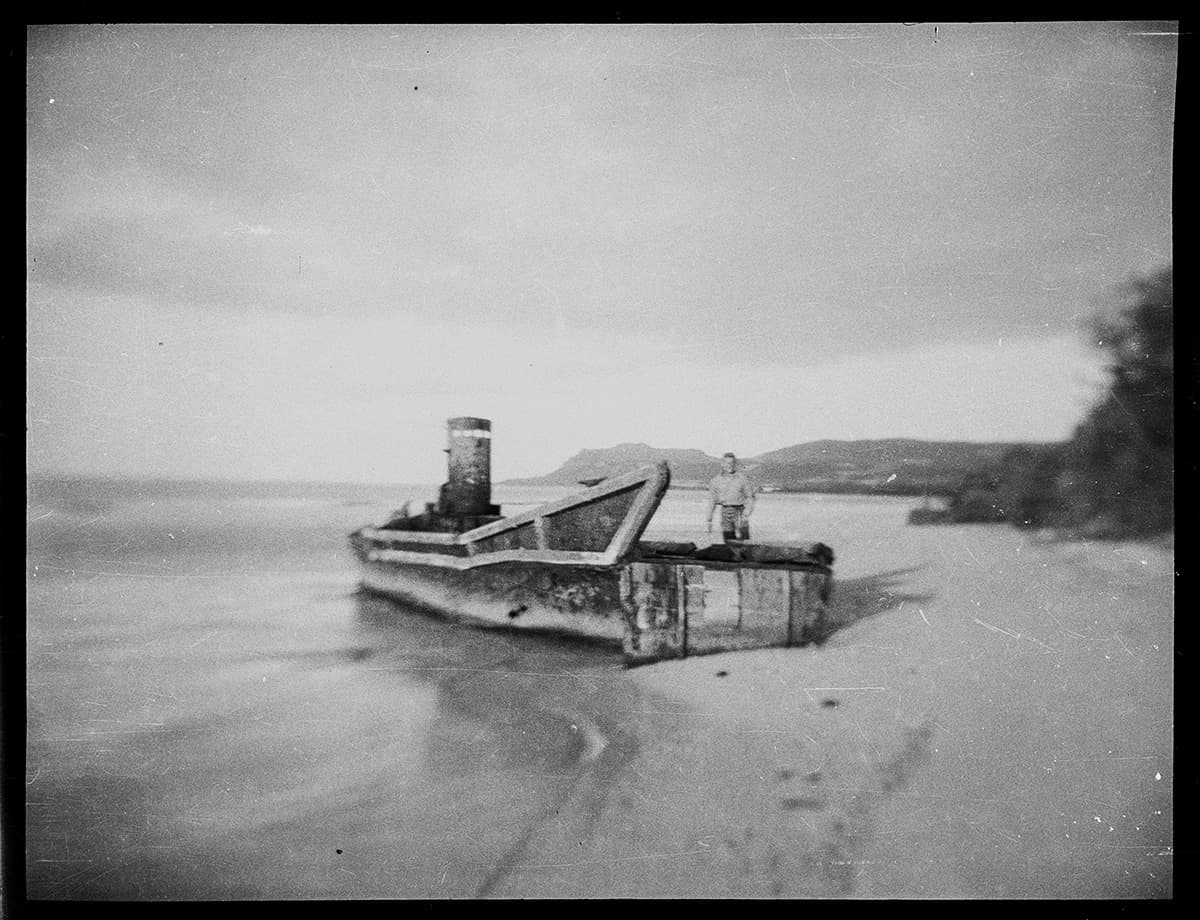
Wreck of Japanese landing boat "Daihatsu" on the island shore. Pacific Ocean. 1945
Wreck of Japanese landing boat "Daihatsu" on the island shore. Pacific Ocean. 1945
A frog on the shore of an island. Pacific Ocean. 1945
A frog on the shore of an island. Pacific Ocean. 1945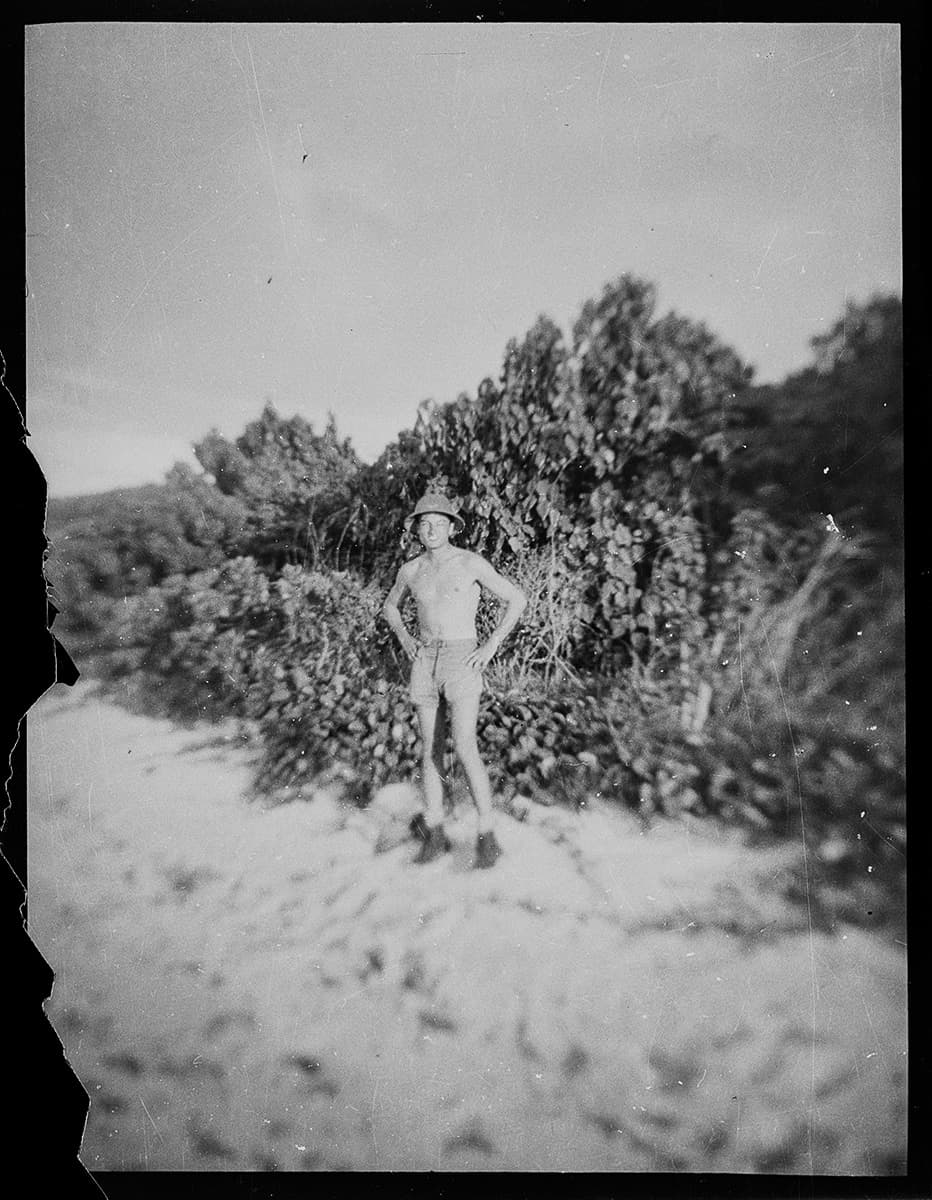
Portrait of an aviator on the shore of an island. Pacific Ocean. 1945
Portrait of an aviator on the shore of an island. Pacific Ocean. 1945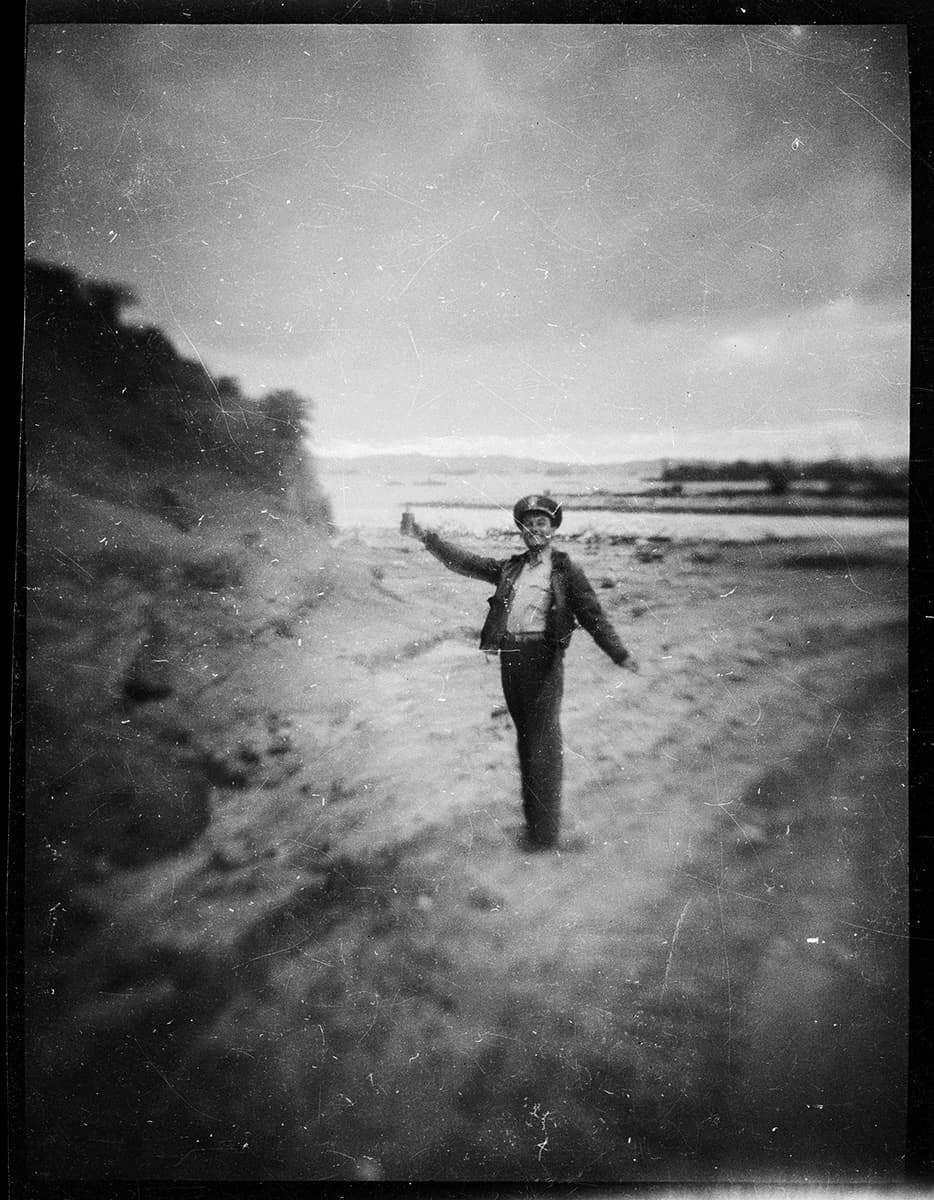
Portrait of an aviator with a bottle on the shore of an island. Pacific Ocean. 1945
Portrait of an aviator with a bottle on the shore of an island. Pacific Ocean. 1945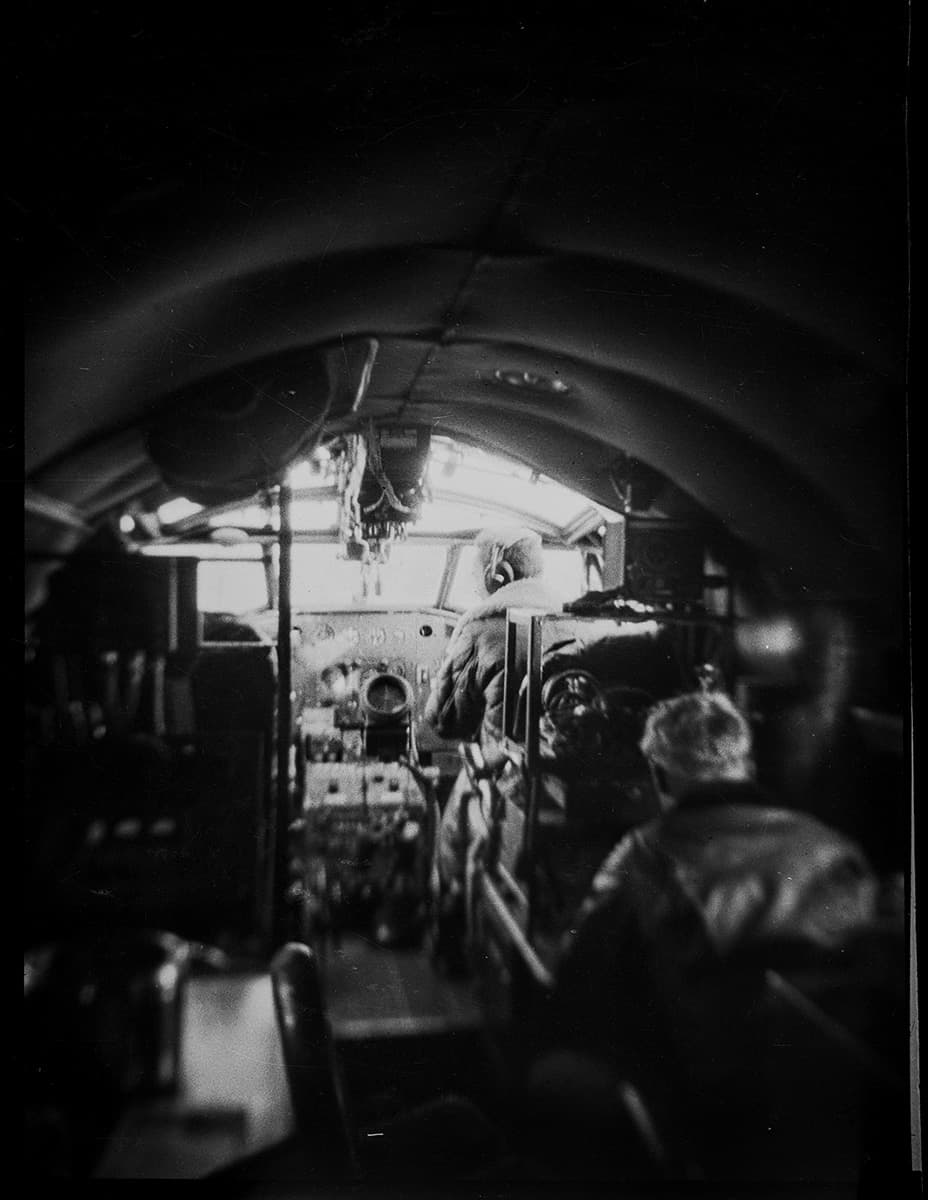
Interior view of an American Martin PBM Mariner aircraft, numbered K-3 of rescue squadron VH-4, during flight. Pacific Ocean. 1945
Interior view of an American Martin PBM Mariner aircraft, numbered K-3 of rescue squadron VH-4, during flight. Pacific Ocean. 1945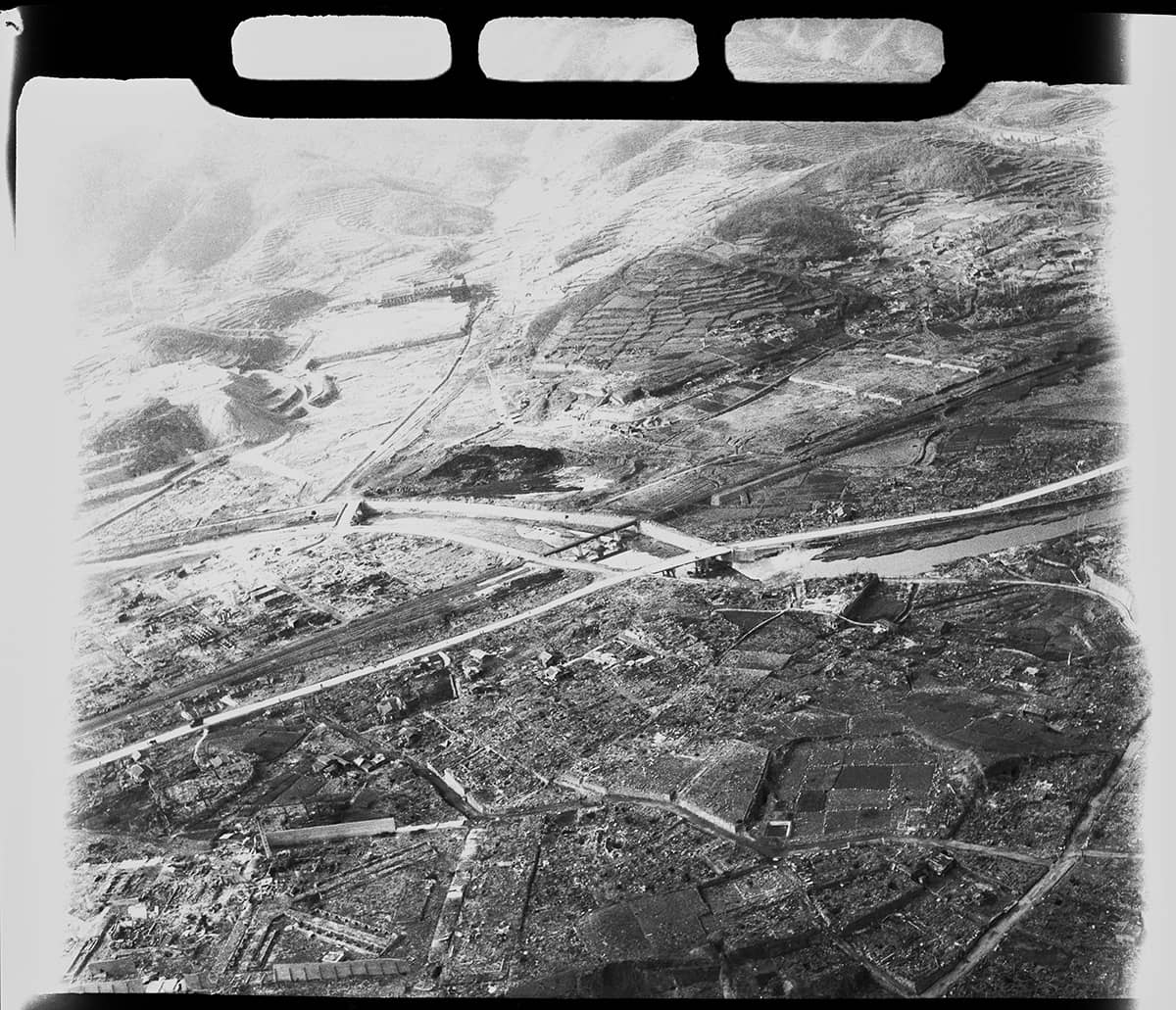
The centre of Nagasaki destroyed by an atomic bomb dropped by the Americans on 9 August 1945. The Fat Man atomic bomb, containing the equivalent of 21,000 tonnes of TNT, was dropped on the city from a height of 500 metres. The death toll was 39,000, rising to 75,000 by the end of the year. Half of the city, with a population of 195,000, was completely destroyed. Nagasaki, Japan. 1945
The centre of Nagasaki destroyed by an atomic bomb dropped by the Americans on 9 August 1945. The Fat Man atomic bomb, containing the equivalent of 21,000 tonnes of TNT, was dropped on the city from a height of 500 metres. The death toll was 39,000, rising to 75,000 by the end of the year. Half of the city, with a population of 195,000, was completely destroyed. Nagasaki, Japan. 1945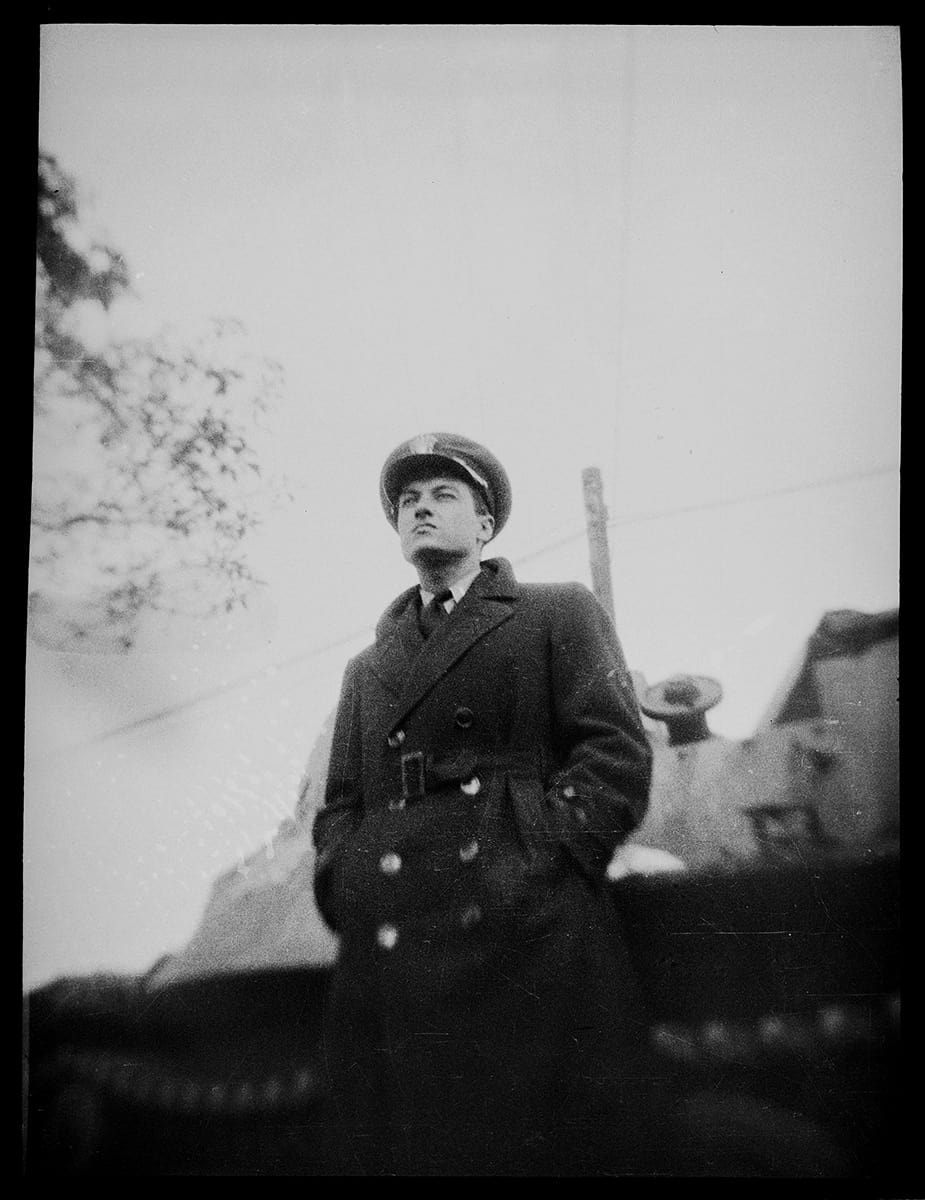
Portrait of an aviator against the background of a destroyed Japanese Type 95 light tank, also known by the code name "Ha-go". Tokyo, Japan. 1945
Portrait of an aviator against the background of a destroyed Japanese Type 95 light tank, also known by the code name "Ha-go". Tokyo, Japan. 1945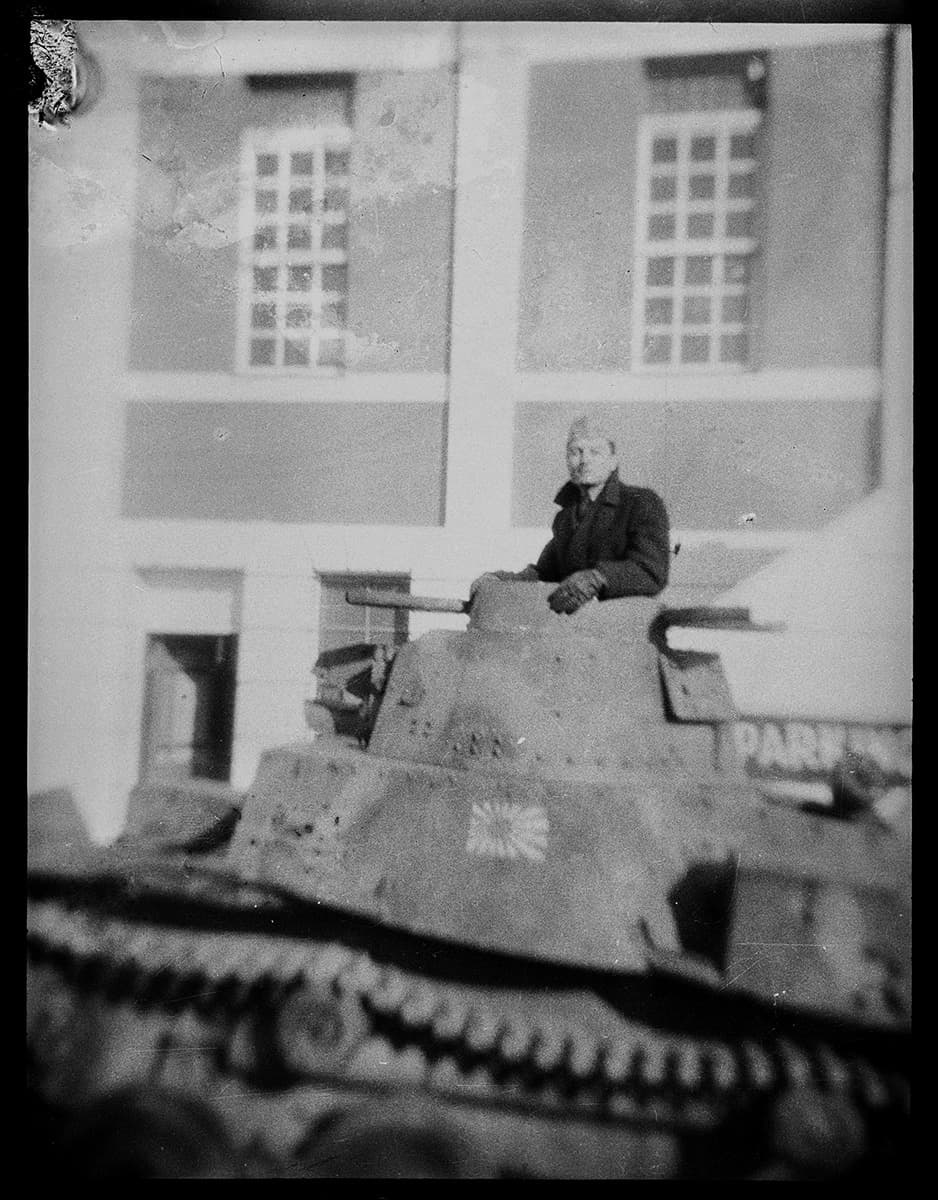
Portrait of an aviator against the background of a destroyed Japanese Type 95 light tank, also known by the code name "Ha-go". Tokyo, Japan. 1945
Portrait of an aviator against the background of a destroyed Japanese Type 95 light tank, also known by the code name "Ha-go". Tokyo, Japan. 1945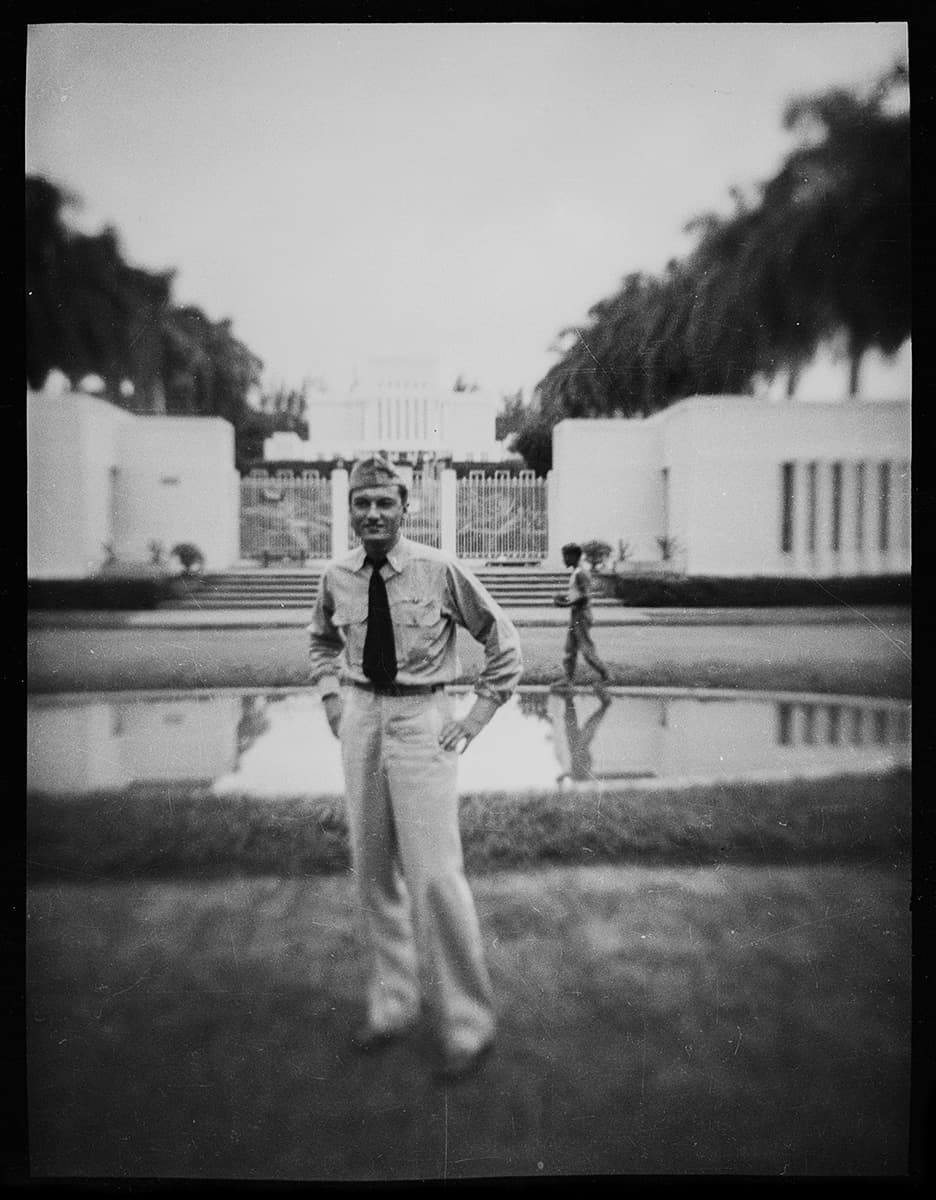
Portrait of an American aviator against the background of the Ministry and General Staff of the Imperial Japanese Army. Tokyo, Japan. 1945
Portrait of an American aviator against the background of the Ministry and General Staff of the Imperial Japanese Army. Tokyo, Japan. 1945
Portrait of an American aviator. Tokyo, Japan. 1945
Portrait of an American aviator. Tokyo, Japan. 1945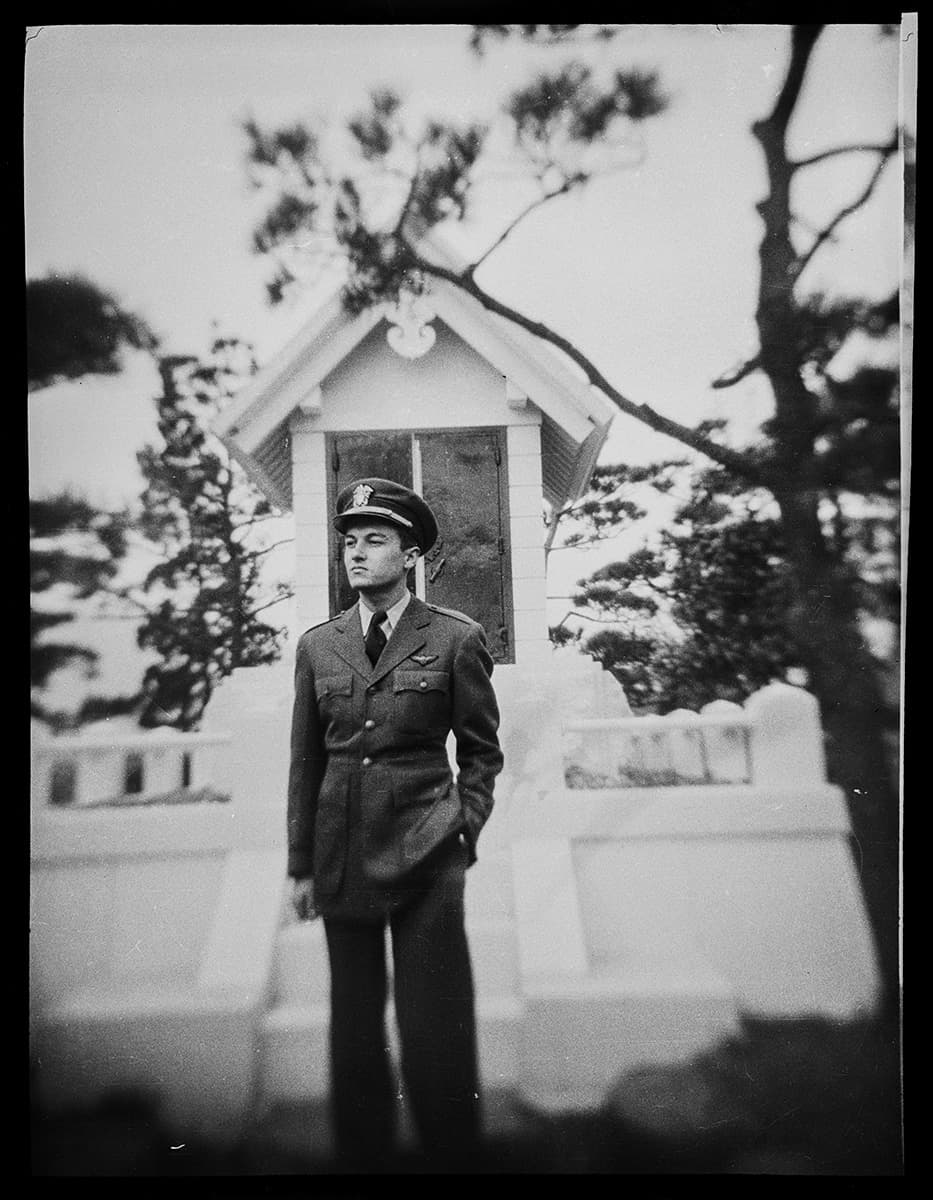
Portrait of an American aviator. Tokyo, Japan. 1945
Portrait of an American aviator. Tokyo, Japan. 1945